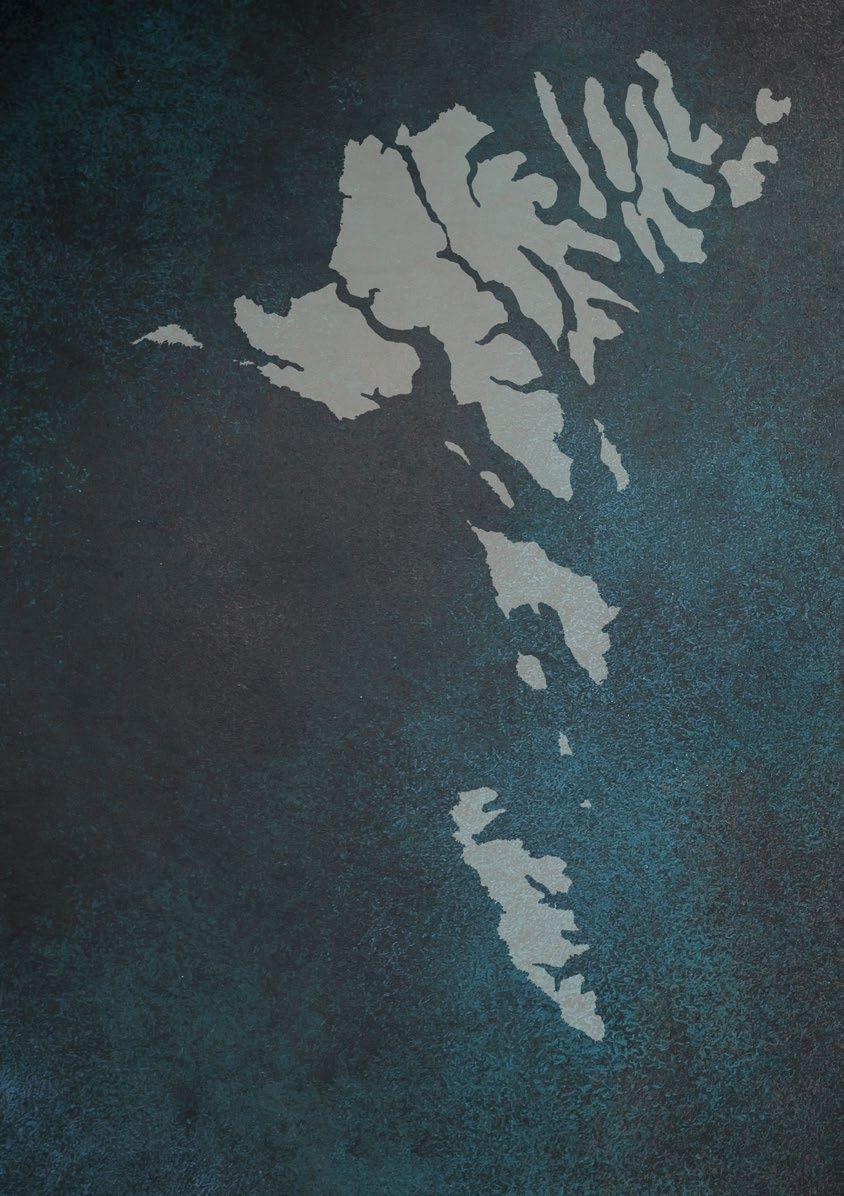CHURCHES of the Faroe Islands
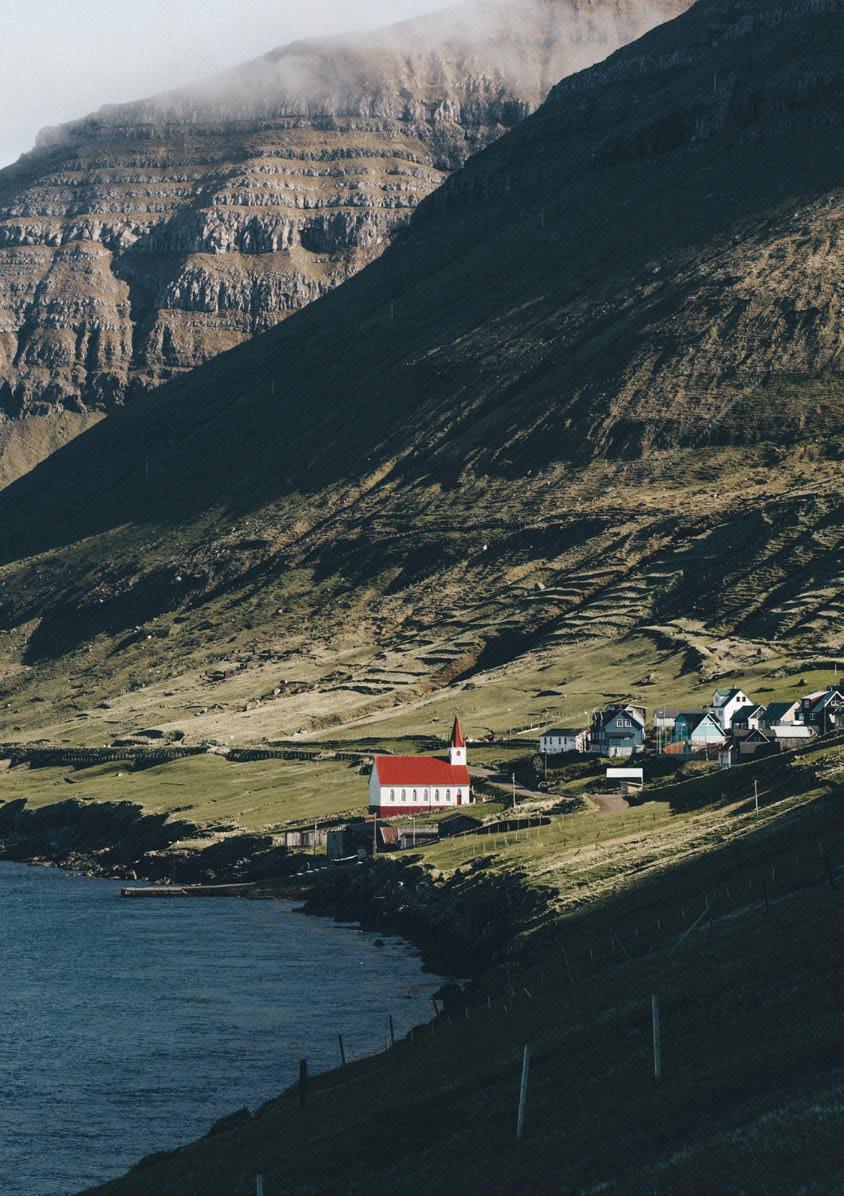

9 6 2 7 4 3 1 8 5 FEATURED IN THIS BOOKLET THE 11 CHURCHES 11 10
Cover photo: Brandon Eckroth
Photos: Mitch Wies, Erik Hageman, Rachel Jonas, Amy Haslehurst, Klara Johannesen , Kevin Faingnaert, Ólavur Frederiksen, Amy Hansen and others
Published and distributed by: Visit Faroe Islands, í Gongini 9, P.O. Box 118, FO-110 Tórshavn, Tel. +298 666 555, www.visitfaroeislands.com, info@visitfaroeislands.com
Design and print: Sendistovan
Copyrights © Permission is required from publisher and author to reproduce text. Permission is required from photographers to reproduce photos.
Biblography: Eliasen, M.K Paulina (2020), Kirkjuklæði, Føroyskt Kirkjumál
Gregoriussen, J.P (1995), Gomlu trækirkjurnar, Forlagið í Støplum
Gregoriussen, J.P (1997), Eldri Hválvkirkjurnar, Forlagið í Støplum
Gregoriussen, J.P (1998), Yngru Hválvkirkjurnar, Forlagið í Støplum
Mohr, Janus (2014), Fjálgasta friðskjól á foldum, Forlagið Fannir Sørensen, Lasse (1979), Kirkjurnar í Føroyum, Forlagið Tusøla Church litterature and interviews with Church Council menbers
Introduction 4 Faith in the Faroes . . . . . . . . . . . . . . . . . . . . . . . . . . . . . . . . . . . . . . . . . . . . 6 1 Christianskirkjan (King Christian’s Church) . . . . . . . . . . . . . . . . . . . 14 2 Funnings kirkja (The Church of Funningur) . . . . . . . . . . . . . . . . . . 20 3 Gøtu kirkja (The Church of Gøta) 24 4 Fríðrikskirkjan (Dean Fríðrikkur’s Church) 28 5 Sandavágs kirkja (The Church of Sandavágur) . . . . . . . . . . . . . . . . 32 6 Vesturkirkjan (The Church of Western Tórshavn) . . . . . . . . . . . . . . 36 7 Havnar kirkja (Tórshavn Cathedral) 40 8 Mariukirkjan (Saint Mary’s Church) 46 9 Ólavskirkjan (Saint Olav’s Church) . . . . . . . . . . . . . . . . . . . . . . . . . 50 10 Fámjins kirkja (The Church of Fámjin) 56 11 Vágs kirkja (The Church of Vágur) 60 CONTENTS
INTRODUCTION
Arrive on any island in the Faroe Islands, and you will undoubtedly see a church. Arrive by sea, and the church will likely be your first sight. That is because churches in the Faroes are usually constructed and placed so that sailors can see them from the water. This serves as an example of how the church has long been the uniting local cultural centre of the villages. This still holds true today.
‘Church’ in Faroese is ‘kirkja’, and church names use this suffix. The villages of Kirkjubø and kirkja on Fugloy also include ‘kirkja’. These names show how enormously important the church has been for Faroese society for more than a thousand years; from the settlers’ first faith to the Catholic period and beyond the Reformation.
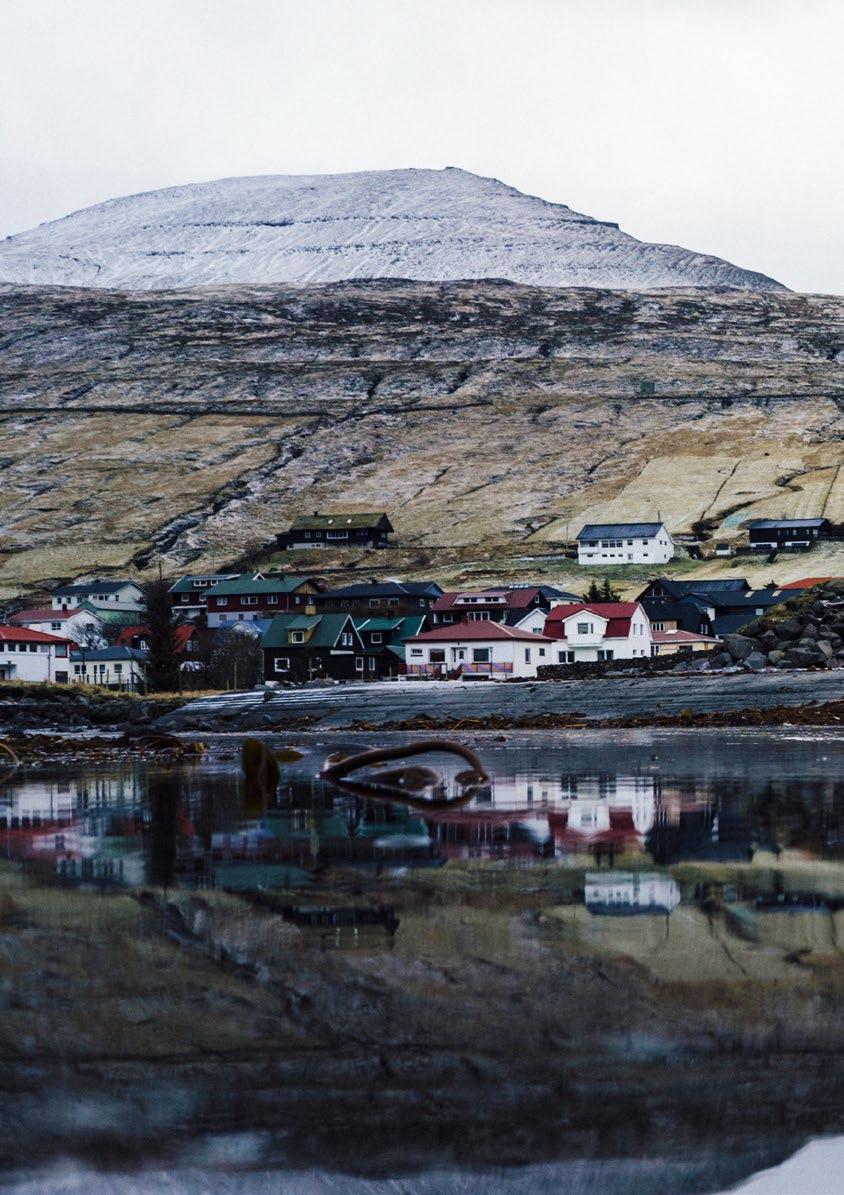
Each church has its own unique story: about every day, deep-rooted faith in God to survive the violent forces of nature; about culture and unity and the people of the village and parish; about how the church has been at the centre of our happiest moments, as well as the most tragic; about priests and hymns and rituals; about nationality and the effort to advance the Faroese language in a time when it was believed that God did not understand Faroese.
This leaflet is your entryway to the stories of eleven remarkable churches that all have regular opening hours. The opening hours stated in this leaflet may be affected by private arrangements in the church. Please be respectful of these private arrangements.
4 INTRODUCTION
INTRODUCTION
Most churches in the Faroe Islands are open upon appointment. More information about the churches, contact information, events and church services can be found at whatson.fo/churches and in regional information centres.


CHURCHES OF THE FAROE ISLANDS 5
FAITH in the Faroes
It is said that the Faroe Islands were first inhabited after year AD 600 by Irish monks who came to pray and live close to God in peace. Other sources suggest that the islands were inhabited long before that, and that the Christian Celtic faith was prominent on the islands for a long time, including after the landnam period around AD 800 when Norwegian emigrants and Vikings – probably along with Scots and Irishmen – settled here.
It is possible that both Vikings, with their belief in Norse gods, and people of other backgrounds, with their Christian Celtic faith, have lived and worked together on the islands during the Viking Age. The Celtic religion, with its distinctive features and values – such as tall crosses and a closeness to nature – later merged with the Catholic faith and, eventually, with the Protestant church.
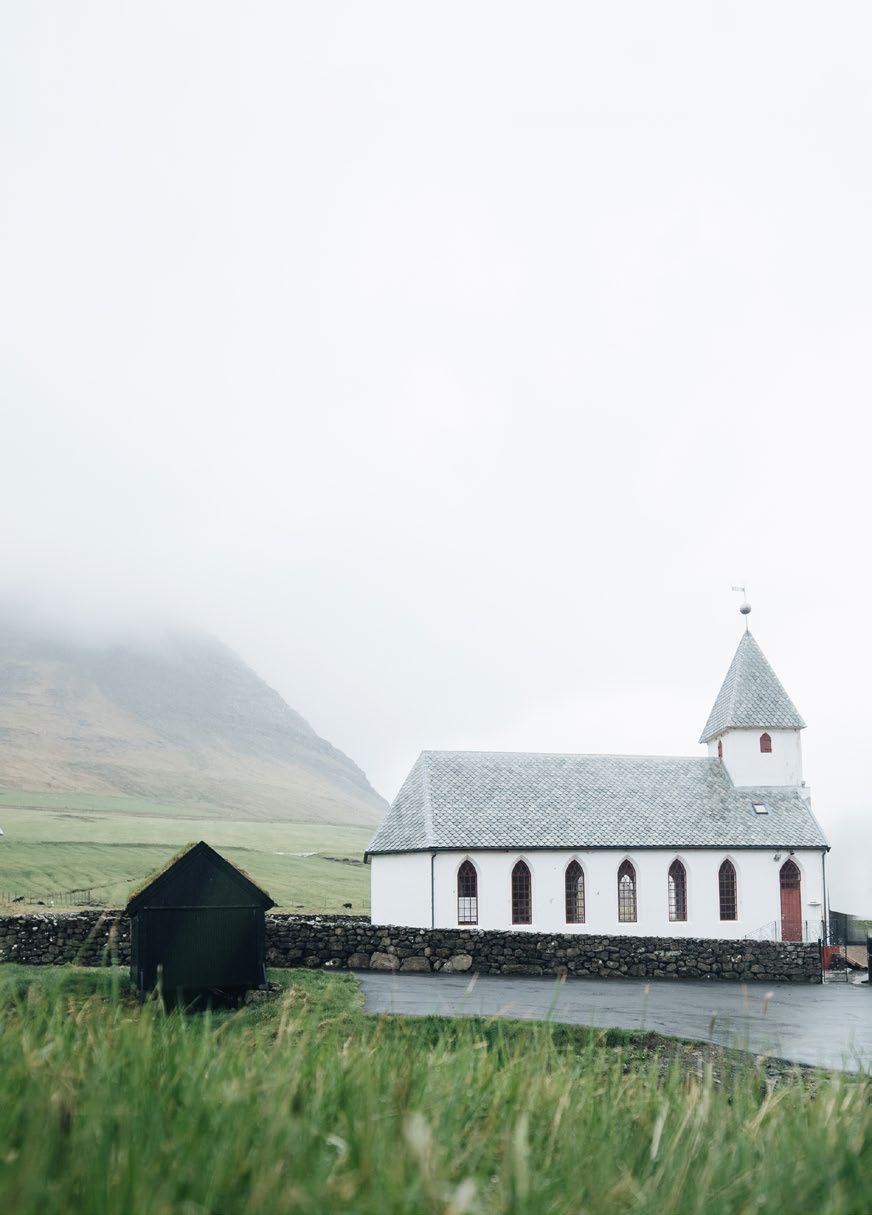
6 FAITH IN THE FAROES
According to Faroese history, the Faroe Islands was forcibly christened around AD 1000 as part of an agreement with Norwegian kings on taxes, shipment of goods and military power. Through Norway, the Faroes became part of the order and power of the medieval Catholic Church and subject to the Archbishop of Trondheim in Norway. The village of Kirkjubø became the bishop’s seat and head office of the diocese, and established a cathedral, an administration, taxation and a Latin school. The Catholic Church also gradually seized control of over half of the land in the Faroe Islands.
In 1539, the Protestant Reformation was carried out under the Danish King of the Faroes. Subsequently, the new Protestant Church became increasingly Danish, both in language and administration. The land owned by the Catholic Church was acquired by the Danish crown and became the so-called ‘Kings Land’. In 1948, after the Home Rule Act, the Faroese Parliament took over the land. To this day, half of all Faroese land – the former land of the Catholic Church – remains public land.
Today, the Faroese are predominantly Protestant. However, there has been one Catholic Church in Tórshavn, the capital, since 1932. Franciscan Sisters run a convent, school and kindergarten. Despite the Reformation, old Catholic traditions are still found in Faroese religious life. For example, certain churches and priests say Mass during service, and in daily life, it is common for parents or grandparents to make the sign of the cross over children before they leave the house.
Today, more than 80% of Faroese are members of the national church in the Faroes. The rest are, for the most part, members of other Christian congregations and independent churches.
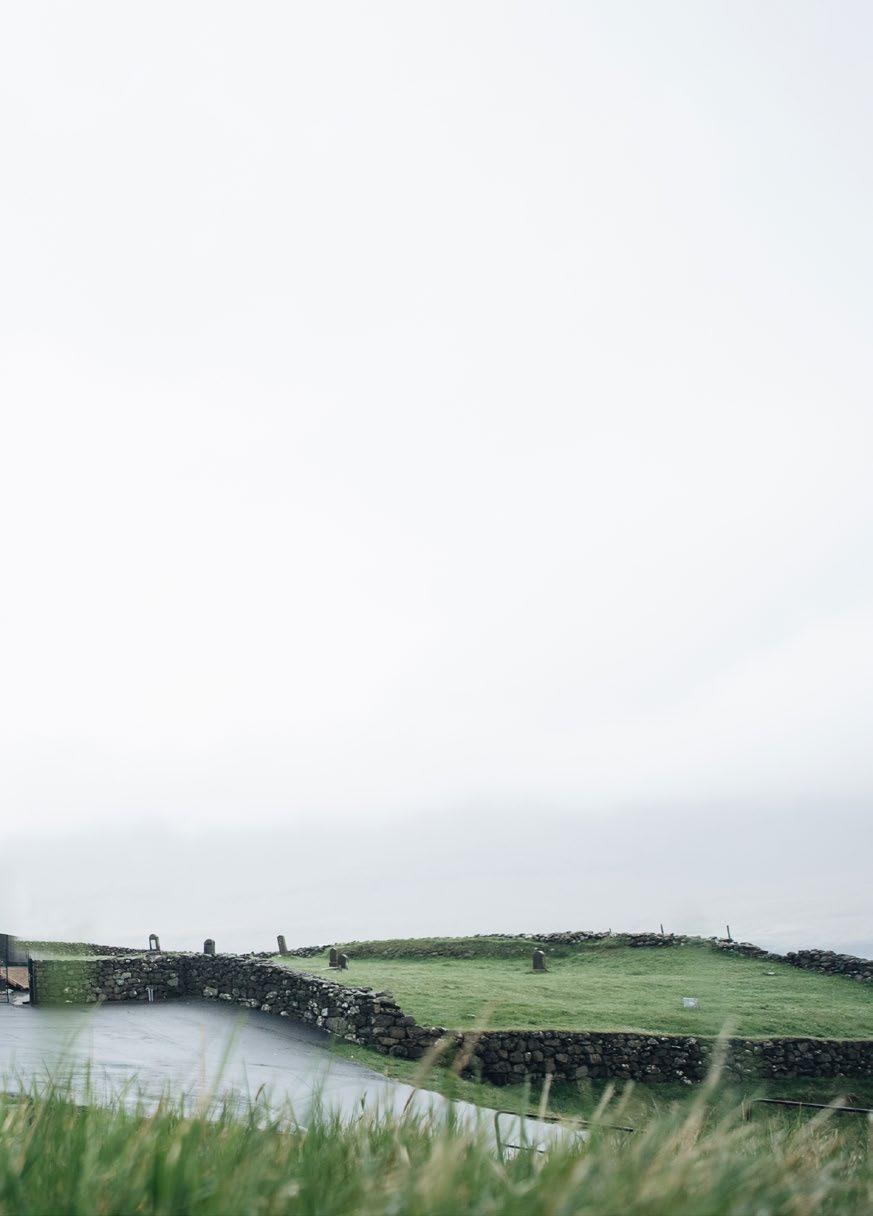
7 CHURCHES OF THE FAROE ISLANDS
THE REMARKABLE CHURCHES OF THE FAROE ISLANDS
• Sixty-two churches still stand in the Faroe Islands, as well as many chapels resembling churches.
• They are scattered around villages on sixteen of the country’s eighteen islands.
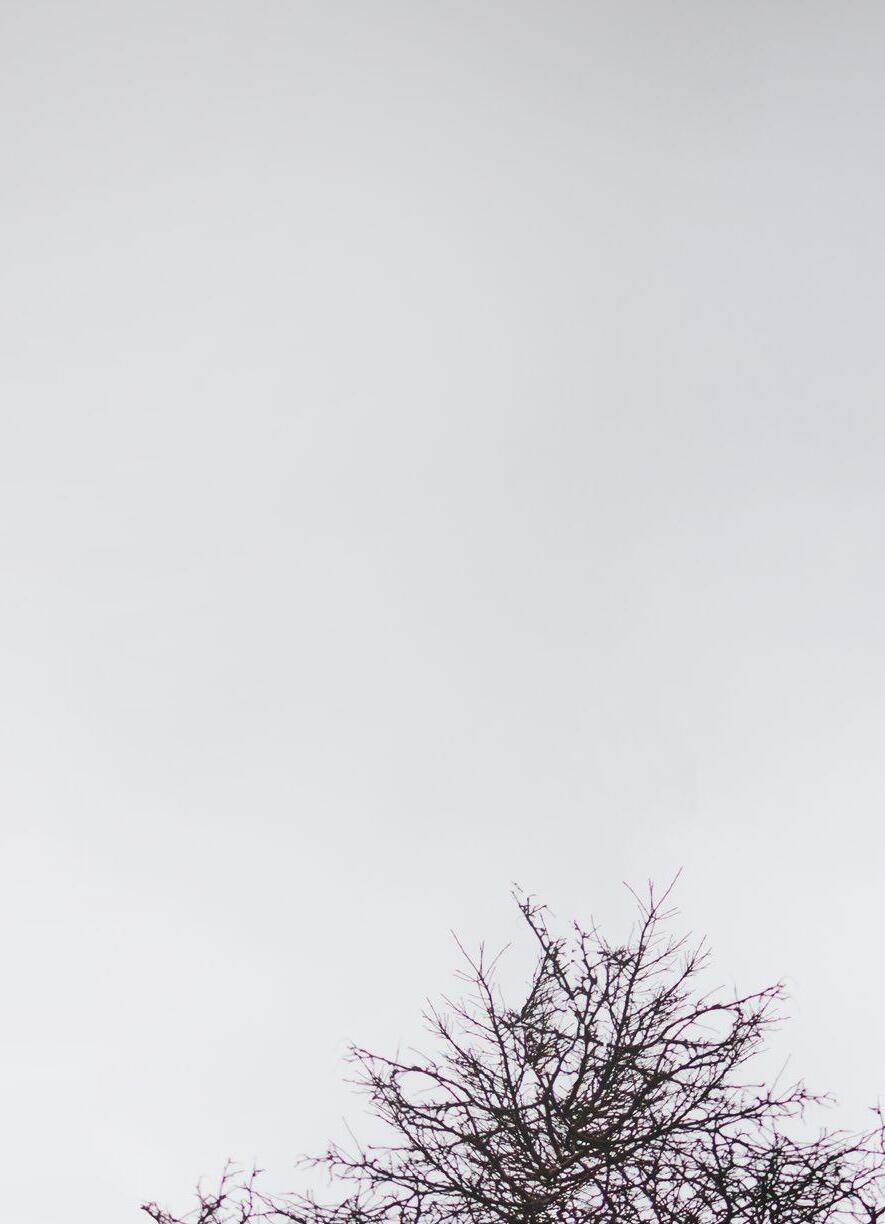
• Nearly every second village in the Faroes has managed to build its own church.
• The oldest churches are from a time when only a few thousand people lived in the Faroes. Even small villages with less than 100 inhabitants raised money to build a church.
• Considering the period and the local population when they were built, the churches are major architectural achievements – from the oldest wooden churches to the newer, specially built churches.
• Uncover unique architectural styles, exceptional handicraft, special furnishings, altar cloths, needlework and ornaments (with boats, ships and the sea as a recurring theme), organs, altarpieces and relics, each particular to the 62 churches. Church towers and church bells, each with unique inscriptions, are also to be found.
8 FAITH IN THE FAROES
Nearly every second village in the Faroes has managed to build its own church.

CHURCHES OF THE FAROE ISLANDS 9
THE CHURCHES, LEGENDS AND THE SEA
According to legend, the church would protect against dangers, horrors, and the forces of nature. Tales of huldufólk (hidden people), giants, witches and the heathens tell stories of people who quarrelled with these supernatural creatures, and of how the creatures lost all power as soon as the village church tower came into sight.
In everyday life, sheep gathering, bird catching, as well as boats and equipment, were blessed with rituals, hymns and prayers. Sometimes, it was even believed that priests could call forth a pod of pilot whales to be slaughtered.
In many respects, the church and faith in God were a natural part of everyday life. For example, the rope used for catching cliff birds was commonly stored in the church attic or the church tower – such as in Funnings kirkja (see page 20).
THE SEA, BOATS, LIFE AND DEATH
The daily struggle for existence alongside the powerful forces of nature, especially the sea, is the primary theme found in artworks, crafts and ornaments in Faroese churches.
Nearly all Faroese churches have a vessel suspended from the ceiling for decorative and commemorative The

10 FAITH IN THE FAROES
altarpiece in Gjógv
reasons. Altarpieces and other decorations portray the ocean, boats and rough seas where humanity turns to God for help in the struggle with nature. For example, one of the miracles from the New Testament, where Jesus calms the sea and walks on water, is often depicted in a Faroese setting where Jesus calms the sea for Faroese boats and fishermen.
Cemeteries, memorial monuments and gravestones across the Faroes also tell the story of the many lost at sea, in the cliffs or other natural disasters.
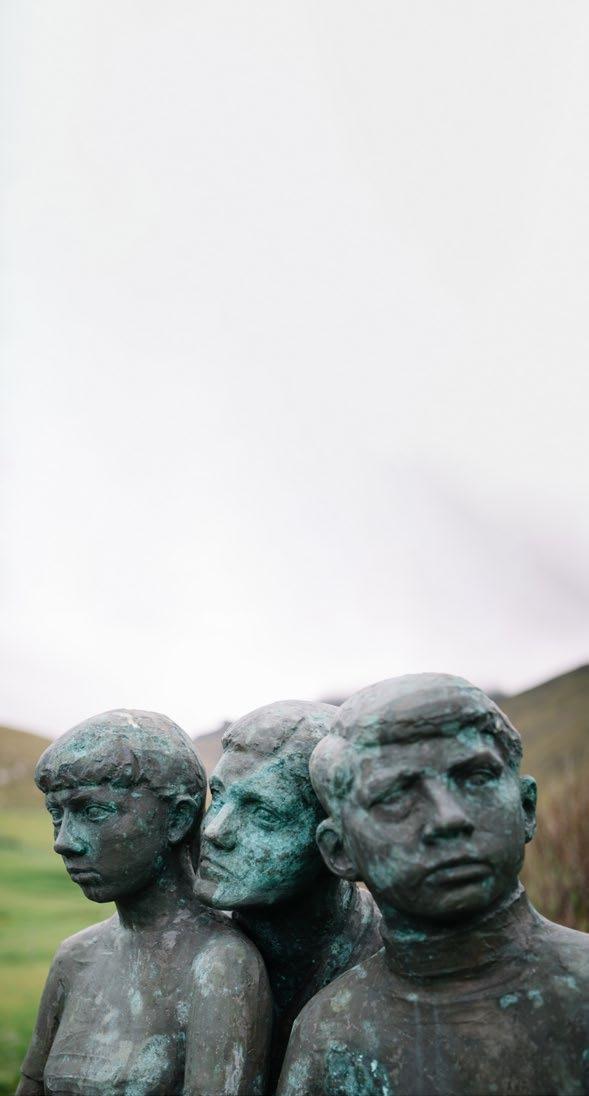
In many places, memorial monuments have been erected near the churches to commemorate those lost at sea. 1 November – All Saints’ Day – is the official Commemoration Day for Persons Lost at Sea. On this day, services and memorial services are held across the country.
Also, more recent artwork and church decorations – for example, by Tróndur Patursson – are influenced by the struggle with powerful forces of nature and the richness of natural life.
11 CHURCHES OF THE FAROE ISLANDS
CEMETERIES AND FUNERALS
In the Faroe Islands, funerals tend to gather large crowds. There is no crematorium in the Faroes, which means that the coffins are driven by car to the cemetery.

Usually, a funeral procession follows the car from the church to the cemetery, often located at some distance from the church. If you come across a funeral procession as you are driving in your car, it is custom and a sign of respect to stop the car, step outside, and wait in silence until the funeral procession has passed.
THE CHURCHES AND THE FOOTPATHS BETWEEN VILLAGES
The footpaths between villages, ‘bygdagøtur’ meaning village paths, tell many stories of lives lived. The paths connect the villages with churches to villages without a church.
Before the introduction of roads, people regularly made the long journey along the village paths to attend church services. Children were carried to their baptism along the paths. In some villages, it was custom that the youngest godfather would run with the baptised baby along the footpath back home.
Mourners carried the coffins of loved ones along the heavy path for funeral service. On some village paths, a stone along the path where men used to rest the coffin are named after this – for example, ‘líksteinur’, meaning corpse stone.
Adolescents walked, excited and anxious, to their confirmations where they had to be examined before they could receive the priest’s hand on their heads.
Brides and grooms walked to their wedding ceremony – and returned home as husband and wife.
More information about hiking can be found at visitfaroeislands.com/hiking
12 FAITH IN THE FAROES
THE VIBRANT COMMUNITY OF VOLUNTEERS
To this day, the church plays an active role in life in the Faroes; it is our host in times of celebration and in times of sorrow.
The church has been the central gathering place of the villages and, in many ways, remains so today. The Faroese are undeniably very committed to their church.

In the 62 churches, there are 662 voluntary clerks (2021), led by democratically elected local church councils. In addition, there are at least 300-400 other volunteers that carry out various practical work. In other words, at least 1,800 people work, on a voluntary basis, in churches across the country (corresponding to at least 3.4% of the population). We are pretty sure that, globally speaking, this is quite unique!
BEFORE VISITING THE CHURCHES:
Churches house our most joyous and sorrowful occasions. Be mindful and respect all private arrangements.
Please respect the holy places within and outside the church by:
• always keeping your voice down
• avoid using flash photography
• never eat or drink inside a church
When going for a service please respect the churchgoers by:
• always be seated for an entire service
• be fairly well dressed
Churches are run by voluntary individuals. Donations are always highly appreciated and occasionally mandatory. We advise donating a minimum of DKK 20 for upkeep and maintenance of the churches.
Please do not attend private arrangements unless invited. You are welcome to join a regular service uninvited. This is an excellent way to experience Faroese culture, churches and Faroese singing.
The Sunday services last approximately an hour and are usually held at 11:00 or noon. Find more detailed information at the regional tourist information and on whatson.fo
CHRISTIANSKIRKJAN (King Christian’s Church)
Consecrated: 1963
Address: Kirkjubrekka 6 700 Klaksvík

1 INFO
CHRISTIANSKIRKJAN 14
In the heart of Klaksvík stands the grand Christianskirkjan, made of Faroese stones, timber and slates. It is the largest church in the Faroe Islands (1000 seats) and the first major church in a Nordic country designed in an ancient Norse style – a truly unique church, inside and out.
As you walk up the aisle, you feast your eyes on the magnificent fresco painting The Great Banquet by Joakim Skovgaard. Under the ceiling, suspended from the roof beans, is a historic eight-person boat. This must be the only church in the world where a full-sized vessel hangs. Be sure to pay attention to the baptismal font, which originally is believed to have been a 4,000-year-old pagan bowl.
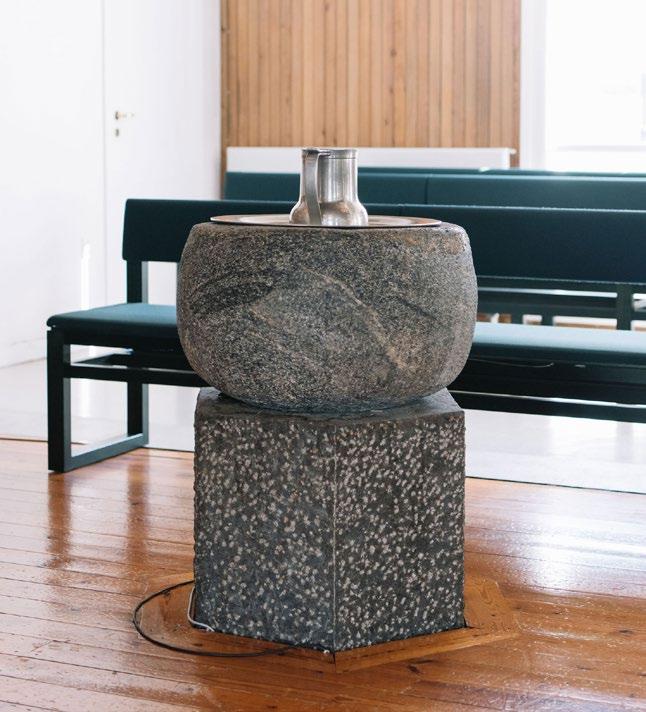
15 CHURCHES OF THE FAROE ISLANDS
HISTORY AND ARCHITECTURE
The architectural style of Christianskirkjan is inspired by the ancient Viking halls and the old Faroese ‘roykstova’ (the main living room of a house containing a fireplace). This construction is supposedly very well suited for churches. The acoustics of Christianskirkjan are excellent. The church is named after King Christian X of Denmark (1870-1947) and was also built to commemorate the Faroese fishermen who lost their lives at sea during the Second World War.
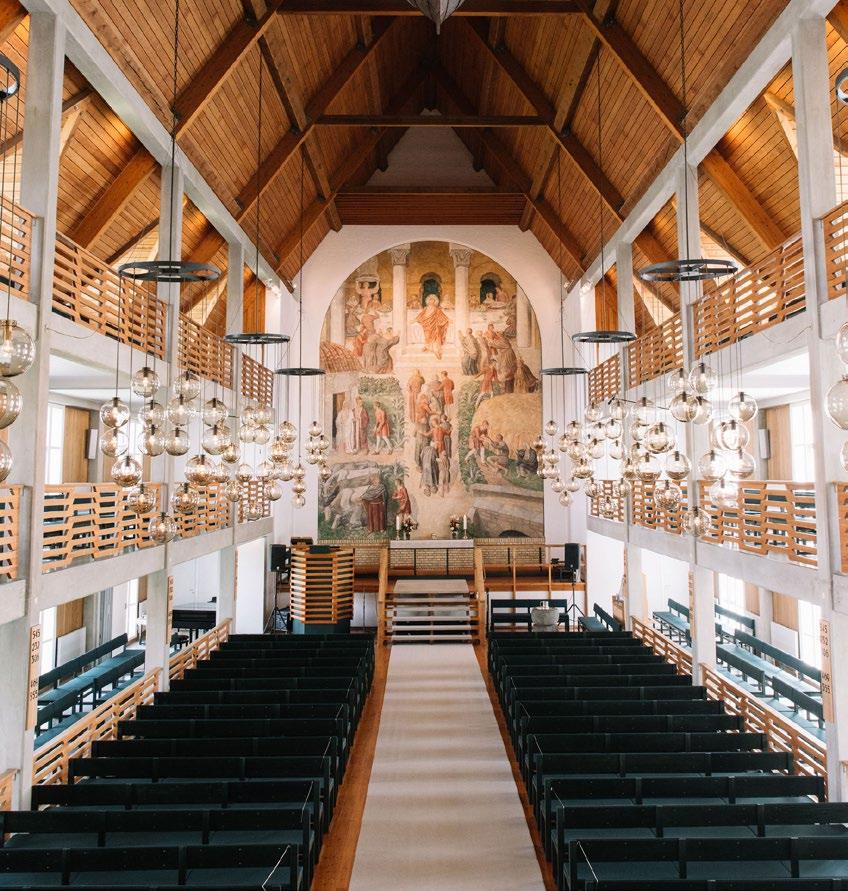
16 CHRISTIANSKIRKJAN
Outside, on the lawn next to the church, stands the bell tower. The tower contains two bells. The larger bell bears the inscription: “Latið her berast
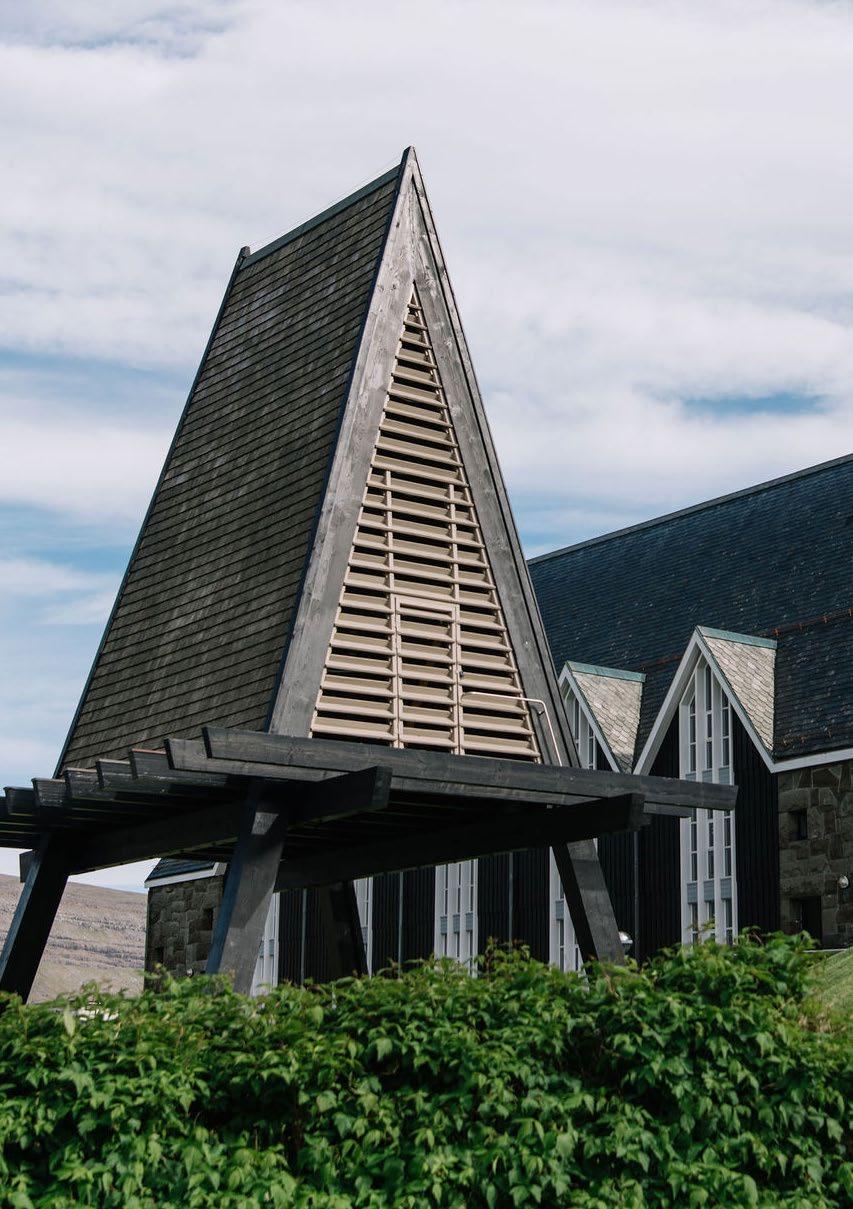
øld eftir øld Boð millum Drottin og mannafjøld Alt meðan fjøllini standa”
(Let the centuries carry Messages between the Lord and the crowds, All while the mountains stand). The smaller bell reads: “Eg kalli á gomul og
á ung Mest tó á sál, sum troytt og tung Stundar á æviga hvílu” (I call on the old and the young, Mostly on the soul, which tired and heavy, Yearns for eternal rest).
17 CHURCHES OF THE FAROE ISLANDS
The historical eight-person boat is modelled on the old clerical boat of Viðareiði, which was the last boat ever built for the then Northern Islands parish. This boat was not only used by the local priest who sailed from Ónagerð – the rectory in Viðareiði – to church services around the islands, but also as a fishing and whaling boat by locals in Fugloy. On the day before Christmas Eve, Tollaksmessudagur, the 23 December 1913, this boat was the first to wash ashore after three boats from the Northern Islands went missing. The boat builder in charge of making a replica of the old boat for the church had the wreck of the old boat in possession. He also reused some of the objects from the old boat.

18 CHRISTIANSKIRKJAN
SPECIAL FURNISHINGS
Christianskirkjan also houses two older altarpieces. The older of the two is painted in 1827 and illustrates the Crucifixion. The younger one is by the Danish artist Peter Raadsig (1806-1882) and pictures Emmaus; it was given to the church for safekeeping in 1867 – the same year that the church that stood here before Christianskirkjan was consecrated.
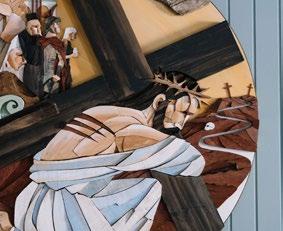
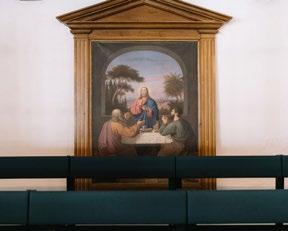
In the church basement, you will find a work of art by Faroese artist, Edward Fuglø. It consists of ten unique, round, carved wooden plates, each depicting a story from the life of Jesus.

Skovgaard (1856-1933) is considered one of the greatest fresco-painters in the Nordic countries since the Middle Ages. The altarpiece was originally made for the Cathedral of Viborg in Denmark (1901), but it had to be removed because of moisture concerns. The painting was moved to the National Gallery of Denmark in Copenhagen, where the architect Peter Koch made sure that it would hang in Christianskirkjan, the building of which he oversaw . It is said that the painting was the focal point that the church was designed and constructed around.
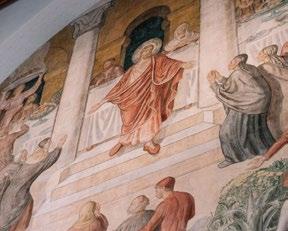
19 CHURCHES OF THE FAROE ISLANDS
FUNNINGS KIRKJA (The Church of Funningur)

2 INFO Consecrated: 1847 Address: Niðri í Túni 475 Funningur FUNNINGS KIRKJA 20
Surrounded by mountains lies the beautiful old village, Funningur. The river that runs between the colourful houses also separates Funnings kirkja from the rock-walled cemetery.
Funnings kirkja is one of ten remaining artful wooden churches built between 1829 and 1847. Its exterior is characteristic with its low foundation, tarred walls, white windows, white tower and turf roof. Prior to this church, four churches have resided on the same spot. The first was demolished in 1609 to make space for the second. The current church is, along with the church of Porkeri, the youngest of the wooden churches in the Faroes. Both were consecrated in 1847.
In Funningur, there are close ties between everyday life, the church and religion. It was customary to store the rope used for catching birds in the steep cliffs of the north in the church attic, and only men going on the hunt were allowed to fetch the rope from the attic.
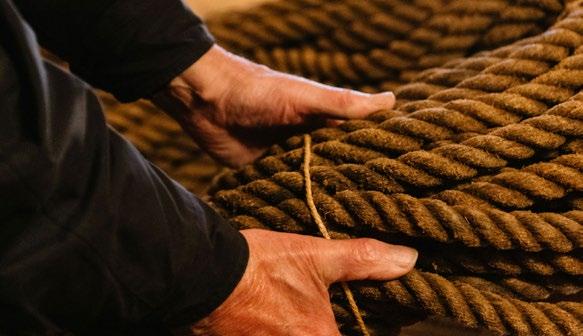
HISTORY AND ARCHITECTURE
IIn its interior, the church is particularly beautiful with its carved walls and unpainted wood, which over time has turned a golden colour. Between the choir and the church, and in front of the altar and the sacristy, there is a detailed and brilliant artistically carved wall. It has been said that it resembles the icon walls of orthodox churches, only
21 CHURCHES OF THE FAROE ISLANDS
with symbolism from Faroese culture and tradition. According to sources, an elderly woman from Funningur recounts from her grandmother that it was the smiths themselves who did the carving. As in most of the wooden churches of the Faroes, a wooden board, with the year of completion and the initials of the craftsmen engraved in it, hangs above the porch entrance. By all accounts, most of the craftsmen were local men from Funningur and Gjógv.
THE FOOTPATH BETWEEN FUNNINGUR AND GJÓGV
In the past, the villages of Gjógv and Funningur used to have very close ties. They constituted one parish and had a joint cemetery until 1919 and a joint church until 1929.
Conditions often made sea travel between the villages impossible; as a result, the footpath called Mannagøtan (The Path of Man) was the only way out of the village. People from Gjógv have walked to Funningur for services. They carried children to their baptism, came for wedding ceremonies and funerals of loved ones.

Not everyone walked all the way to Funningur. Those who could not manage the steep hill on the way back from Funningur would sit at Kirkjusteinur (church rock) from where they could see the church. At the pass of Gjógv (Gjáarskarð), there is a rock called Líksteinur (corpsestone) where they would take a break while the coffin rested on the stone.
Gjáarkirkja (the Church of Gjógv) was consecrated in May 1929. It was consecrated by Jákup Dahl, Dean, and it was the first church consecrated in the Faroese language.
22 FUNNINGS KIRKJA
FURNISHINGS AND OBJECTS
The church has an unpainted crucifix without arms that originates from the first church from around 1690. Legend has it that it washed ashore in the river-mouth below the church. The octagonal baptismal font from 1835 was originally unpainted. The baptism bowl is made of tin and dates from 1735.
SOME OTHER FACTS
Immediately upon entering the church, you will see a plate with a message from the priest, asking people to refrain from spitting on the floor.
The outermost chandelier was given as a present from the people of Gjógv when they got their church in 1929.
A sheepskin lying in the altar ring was a present received in 1962.
The church bell bears the inscription: “Komið til mín” (Come to me).
The theme of the altarpiece, given to the church in the late 1920s, is the Crucified.

23 CHURCHES OF THE FAROE ISLANDS
GØTU KIRKJA (The Church of Gøta)

Consecrated: 1995
Address:
Gøtuvegur 7
511 Gøtugjógv
3 INFO
GØTU KIRKJA 24
The church of Gøtugjógv was consecrated in 1995, which makes it one of the youngest churches in the Faroe Islands. Before that, the people of Gøta went to the old church in Norðragøta, which was consecrated in 1833. The inauguration of the new church by bishop Hans Jacob Joensen was attended by Queen Margrethe II of Denmark and bishops from the other Nordic countries.

THE CHURCHES OF GØTA
Gøta includes the villages undir Gøtueiði, Syðrugøta, Gøtugjógv and Norðragøta. Norðragøta is one of the most historically interesting places in the Faroes. According to Faroese saga, this was the home of Tróndur í Gøtu, the main rival of Sigmundur Brestisson. Next to the wooden church of Norðragøta stands a monument of Tróndur í Gøtu, who died in 1035.
The church tower is meant to symbolise the three crosses of Calvary. The tower contains two bells which are both inscribed: “Eg ringdi yvir bygdir hvøll, eg kallið fólkið: komið øll.” (I ring across villages clear; I call on the people: come, all).
25 CHURCHES OF THE FAROE ISLANDS
SPECIAL FURNISHINGS
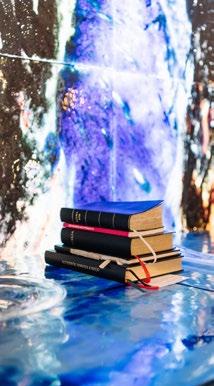
A distinctive feature of the Church of Gøtugjógv is the extensive glasswork by Tróndur Patursson found throughout the church. The altar table, pulpit, baptismal font and the lamps on the walls and ceiling are made of glass and match the large stained-glass paintings of the chancel. Your eyes are drawn towards the stained-glass central window, which also functions as the altarpiece. If you look closely at the altarpiece, in the lower-left corner, you will see the outlines of people with their backs towards us, staring out to the open sea where a Faroese fishing boat battles the stormy sea along with an image of Jesus and light defying the darkness. This is an example of how the arts portray the struggle of everyday living and survival alongside the powerful forces of nature.
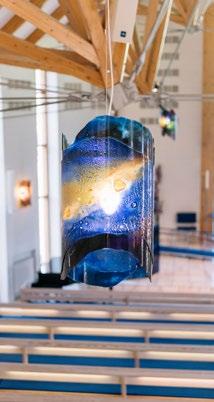

26 GØTU KIRKJA
The new church houses a red chasuble with embroidered symbols inspired by the choir wall of the old church in Norðragøta.
The church in Norðragøta (consecrated in 1833) is one of the oldest churches in the Faroes and the second oldest of the ten wooden churches that adorn and characterise a number of Faroese villages. As typical for the churches of this period, the choir screens are beautifully carved; however, in this church, they are slightly less elaborate than in some of the others. Today, the church is only used for special occasions and as a part of the tour of the Gøta museum – Blásastova.
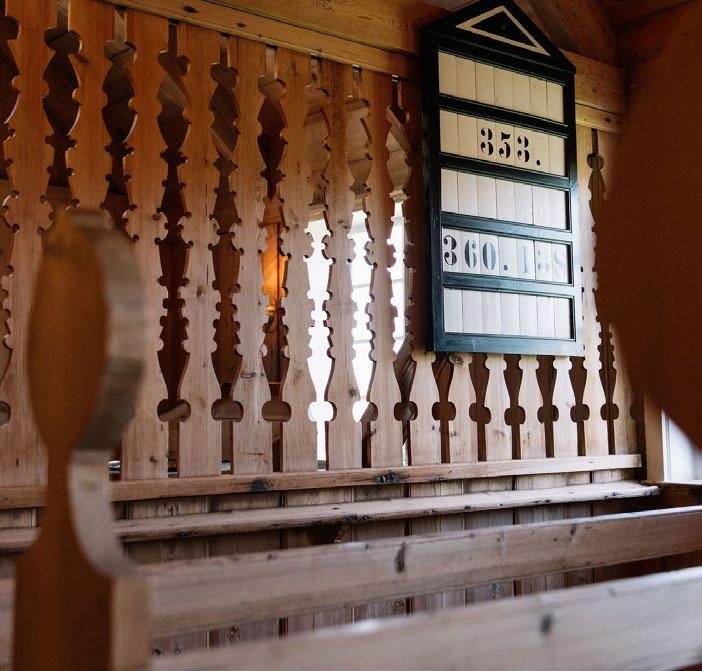
More information about Blásastova can be found at blasastova.fo
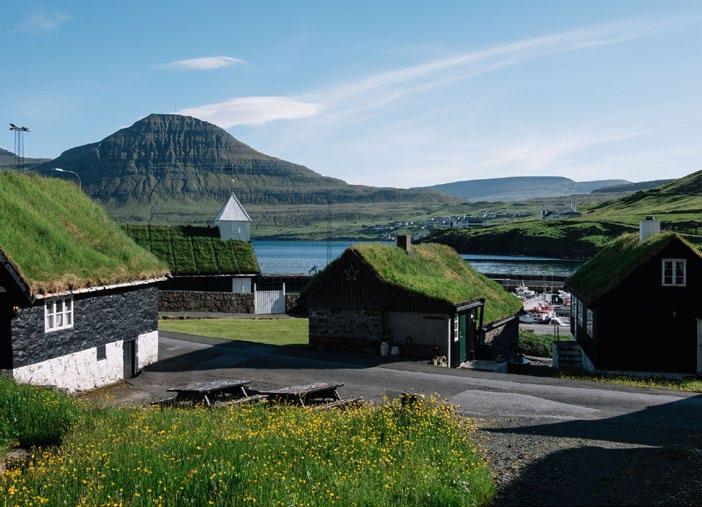
27 CHURCHES OF THE FAROE ISLANDS
FRÍÐRIKSKIRKJAN (Dean Fríðrikkur’s Church)

Consecrated: 1994
Address: Agnið 7 655 Nes
4 INFO
FRÍÐRIKSKIRKJAN 28
The magnificent Fríðrikskirkjan in Toftir was consecrated in 1994 and is one of the newest churches, designed by the Faroese architect Høgni Würdig Larsen.
The altarpiece, the altar, the pulpit and the baptismal font are also designed and made by Høgni Würdig Larsen. Fríðrikskirkjan replaced the old wooden church in Nes from 1843, which had become too small.
HISTORY AND ARCHITECTURE
In 1991, an architectural competition to design the new church was held. The proposal by Høgni Würdig Larsen was judged to be pure in style and in keeping with old Faroese architectural tradition. His proposal was chosen, out of 29 entries, as the winning design.
The church is named after Fríðrikkur Petersen, dean in Nes from 1900 to 1917. Fríðrikkur Petersen also served as a member of parliament for many years. Moreover, he was a gifted poet and translated the Lord’s Prayer into Faroese and wrote the well-known hymns: “Gleðilig jól” (Merry Christmas), and “Tíðin rennur sum streymur í á” (Time passes like the current in the river).
The inscription on the bell, which was cast in Norway, reads: “Eg ringi í gleði, eg ringi í sorg, at himna Guð er var fasta borg” (I ring in joy, I ring in sorrow, the heavenly God is our stronghold).
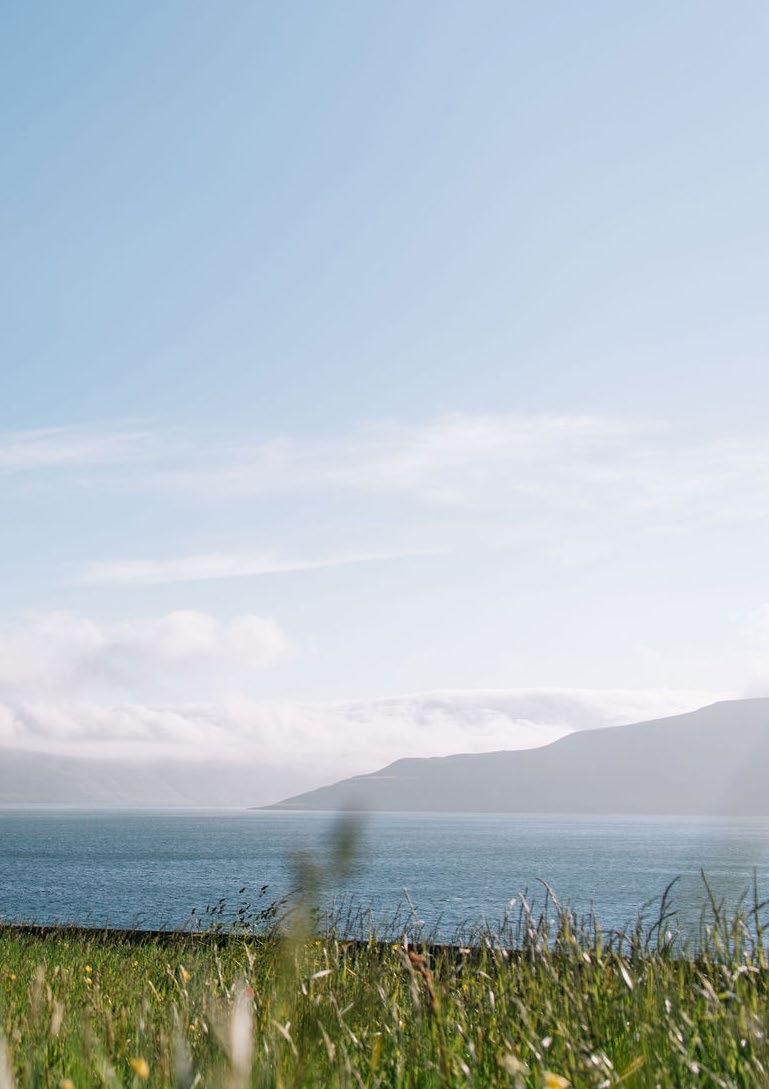
29 CHURCHES OF THE FAROE ISLANDS
The altarpiece weighs approximately 6,000 kilograms, and the altar around 3,000 kilograms
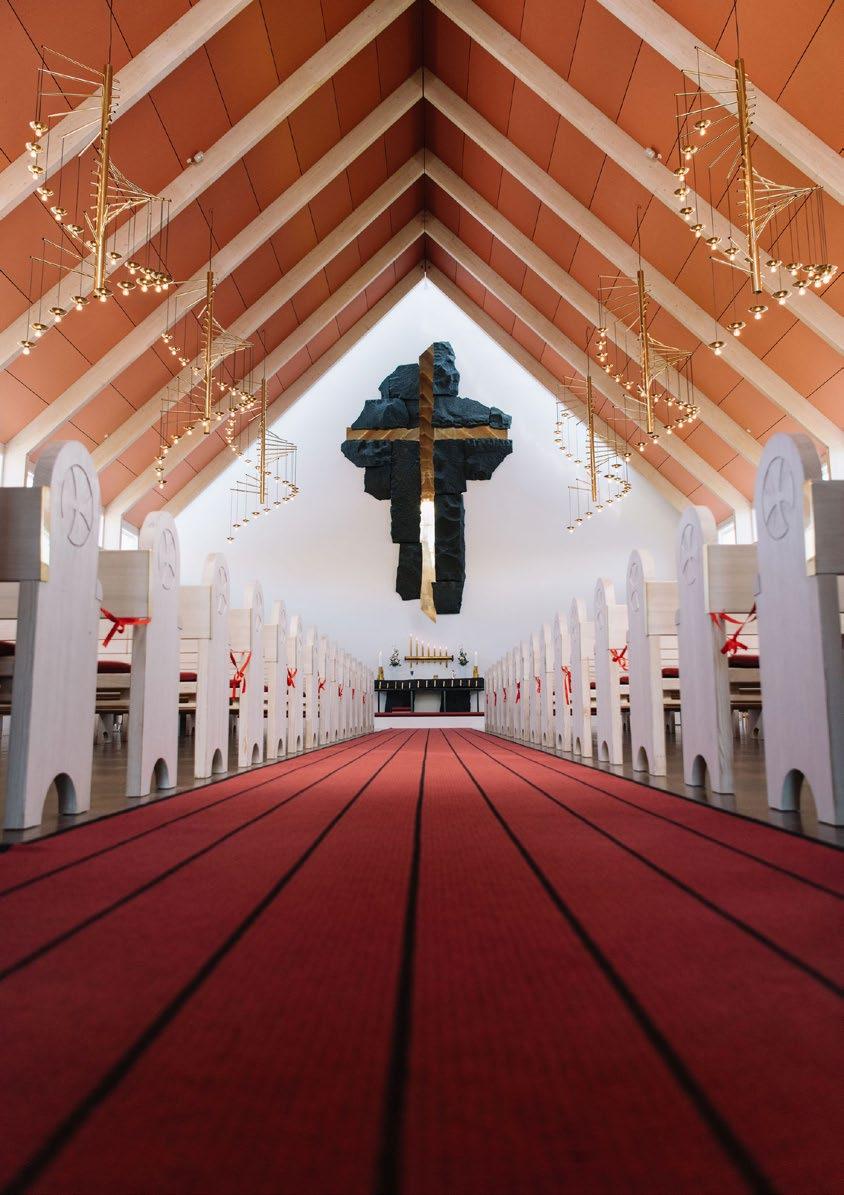
30 FRÍÐRIKSKIRKJAN
SPECIAL FURNISHINGS AND OBJECTS
When you walk up the church floor, on the woven strip rug made from Faroese wool, your eyes will be drawn towards the remarkable altarpiece: a brass cross surrounded by black stone. The altar and the pulpit are made from the same material, namely Swedish granite. The baptismal font is made of Faroese basaltic rock and brass. Høgni Würdig Larsen also designed the unique brass chandeliers, lamps and candlesticks.
When you pass Fríðríkskirkjan in Toftir and continue southwards, you will arrive in the village Nes; this is where you will find the old wooden church of Nes (consecrated in 1843). The church is not in regular use anymore but can be used for special occasions. In addition to the beautifully carved choir screens, the church also houses many unique artefacts. The Nes church bell is the oldest in use in the Faroes. It was cast in 1684.

31 CHURCHES OF THE FAROE ISLANDS
SANDAVÁGS KIRKJA (The Church of Sandavágur)
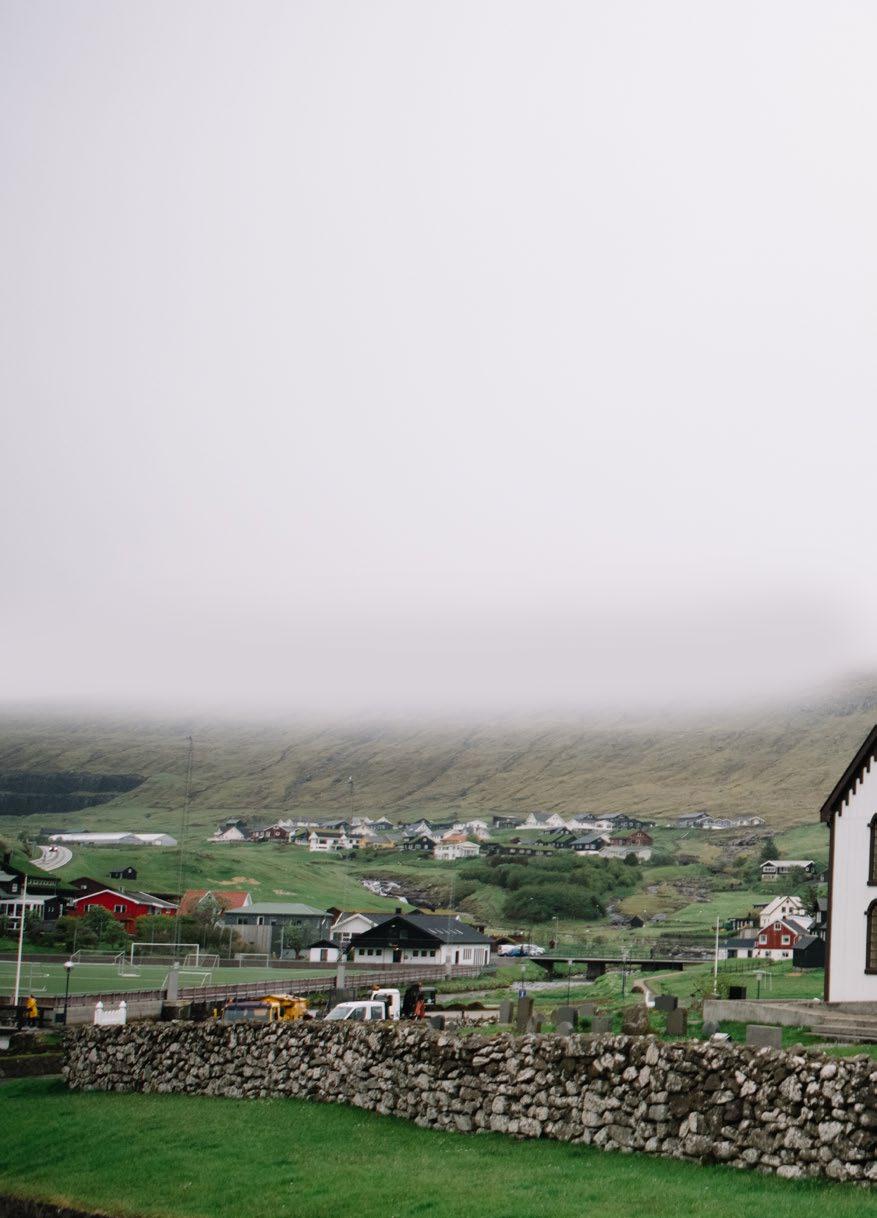
Centrally in the village of Sandavágur stands the beautiful and distinctive church with the scarlet roof. The noticeable tower has two floors, where the lower floor is quadrangular, and the upper floor is octagonal.
In the chancel of the colourful and vibrant church is a thirteenth-century runestone found in Sandavágur. The runestone reads: “Torkil Onundarson Eystmaður úr Rogalandi bygdi hendan stað fyrst” (Torkil Onundarson, man of the east from Rogaland, built this place first).
House ruins, presumably from the Viking period, have also been found in Sandavágur.
Consecrated: 1917
Address:
Gamlivegur 2 360 Sandavágur
5
INFO
32 SANDAVÁGS KIRKJA
HISTORY AND ARCHITECTURE
Sandavágur is one of the old villages with a church. It is hard to tell exactly how many churches have been there, but sources show that there have been six churches in the last 300 years. The previous church was in such a bad state that the church council decided that it would be cheaper to build a new one. The current church was built during the First World War. Work began in 1914, and the church was consecrated in April 1917. The well-known artist, Magnus á Kamarinum, both designed and built the church. Sandavágs kirkja is the oldest church in the Faroes that is both designed and built by a Faroese.
The church is built on sand. If you look closely, you will see that the church tilts slightly southwards. It probably always did this. During the construction of the church, every able-bodied man in the village was ordered to work for 40 hours, gathering stones and sand to lay under the foundation.
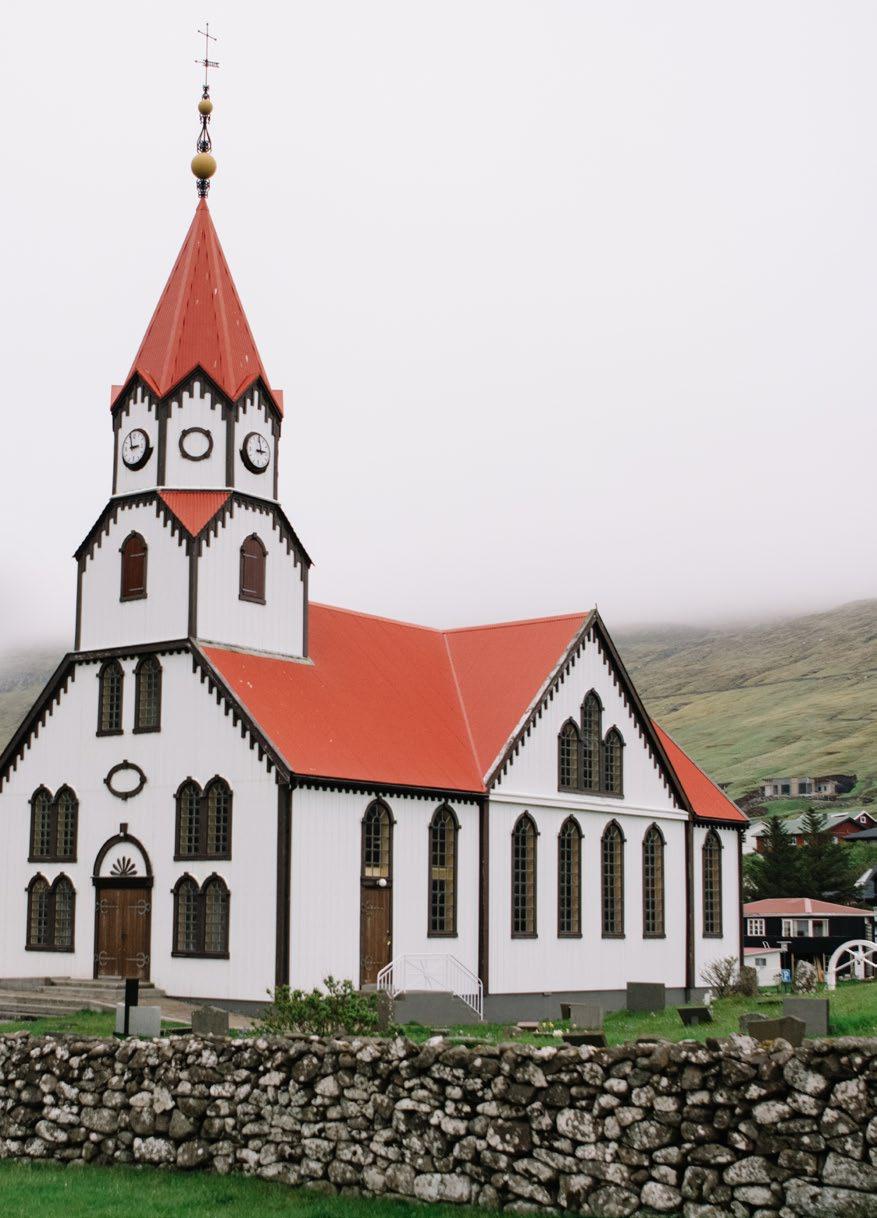
33 CHURCHES OF THE FAROE ISLANDS
The recognisable style of Magnus á Kamarinum is also seen in the furnishings of Hattarvíkar kirkja (1899) and Kvívíkar kirkja (1903), which he designed. He also designed Hest kirkja, consecrated in 1911, which bears quite a resemblance to Hattarvíkar kirkja. Through his work on Sandavágs kirkja, his creative skills and imagination truly came into their own.
SPECIAL FURNISHINGS AND OBJECTS
Carvings and painted flowers are a recurring theme in the church. The octagonal pulpit and octagonal baptismal font are both decorated with carved and painted flowers. A decorative board of flowers and leaves runs above the windows and around the entire church. Seven paintings depicting the tormenting of Jesus hang on the chancel wall above the altar. There was some disagreement about these paintings, but in the end, it was the people of Sandavágur who wanted them to stay.
Above these pictures are two wood-carved lilies. It is said that Magnus á Kamarinum carved one of them and his apprentice the other.
The items on the altar originate from the old church. The candlesticks for the large altar candles were a present from the women of the village. The old silver chalice made by the silversmith Sivert Thorsteinson was stamped in Copenhagen in 1768. The altarpiece also came from the old Sandavágs kirkja and was handed to the church in 1891. Oral accounts suggest that Lucie Ingeman (1792-1868), the wife of the author B. S. Ingeman, painted the altarpiece. It depicts the shepherds’ adoration of the baby Jesus in the barn in Bethlehem.
THE STORY OF THE CHURCH BELLS
Until 1693, when the prime minister donated a new and louder bell, the church used a small ship’s bell. In 1931, an even grander bell was fitted. This bell is inscribed with a poem by Jákup Pauli Henriksen á Mýrini: “Eg kalli nú at øllum Úr smáttum og úr høllum Her Harrans orð hitt reina vil sálum leiðir beina” (I call on everyone, From the shacks and the halls, Here the pure words of the Lord will lead the souls on the straight path). All three bells currently hang in the tower.
34 SANDAVÁGS KIRKJA
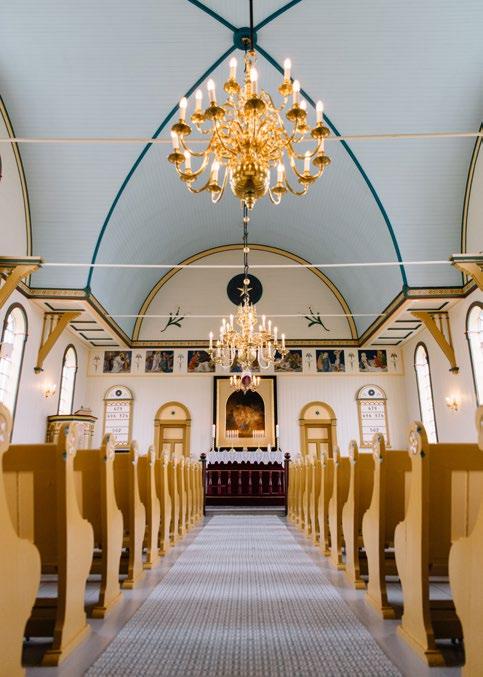

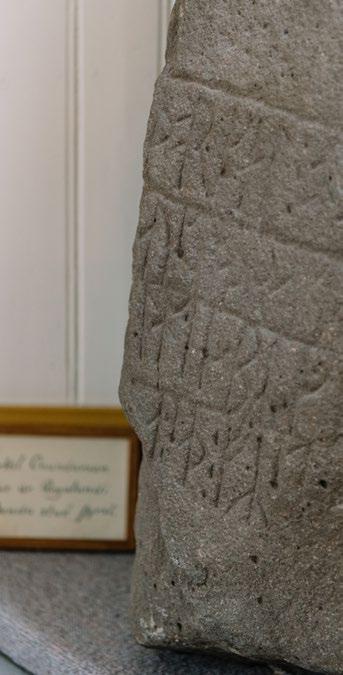
35 CHURCHES OF THE FAROE ISLANDS
VESTURKIRKJAN
(The Church of Western Tórshavn)
Consecrated: 1975
Address: Landavegur 44 100 Tórshavn

6 INFO
36 VESTURKIRKJAN
Vesturkirkjan, which was consecrated in 1975, has become a part of the Tórshavn townscape. It resembles a sailboat in shape, and its 41-metre tower probably makes it the tallest building in the Faroe Islands.
Inside the church, the height really comes into its own, architecturally, where the space above the altar carries the gaze higher and higher and stirs up ideas of eternity. Some see this as a reference to Jacob’s ladder leading to heaven. Others interpret the play of light on the altar as the struggle between the light and darkness at Calvary.
In 2006, a monument depicting Sigmundur Brestisson, by the sculptor Hans Pauli Olsen, was set up in the small grove in front of the church. According to Faroese saga, Sigmundur forcibly Christianised the Faroe Islands around the year 1000.
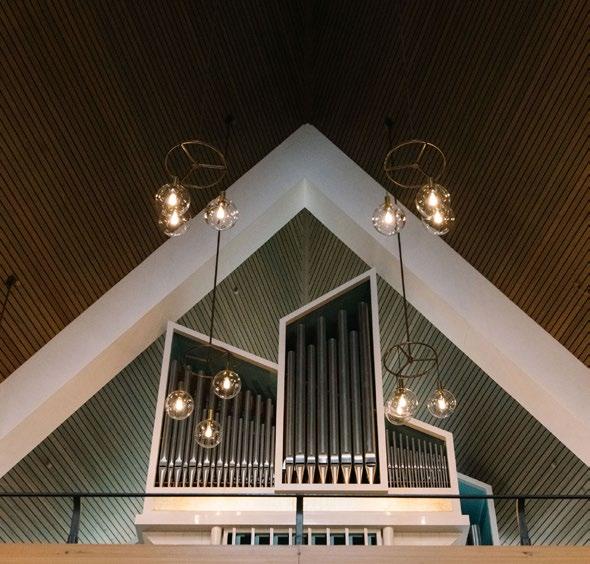
37 CHURCHES OF THE FAROE ISLANDS
The church houses an artistic Frobenius organ from 1975 with 29 stops.
Vesturkirkjan welcomes visitors to “Open church,” where you can visit during the day, light a candle, sit quietly and pray in silence. Please be respectful of others.
ARCHITECTURE AND SPECIAL FURNISHINGS
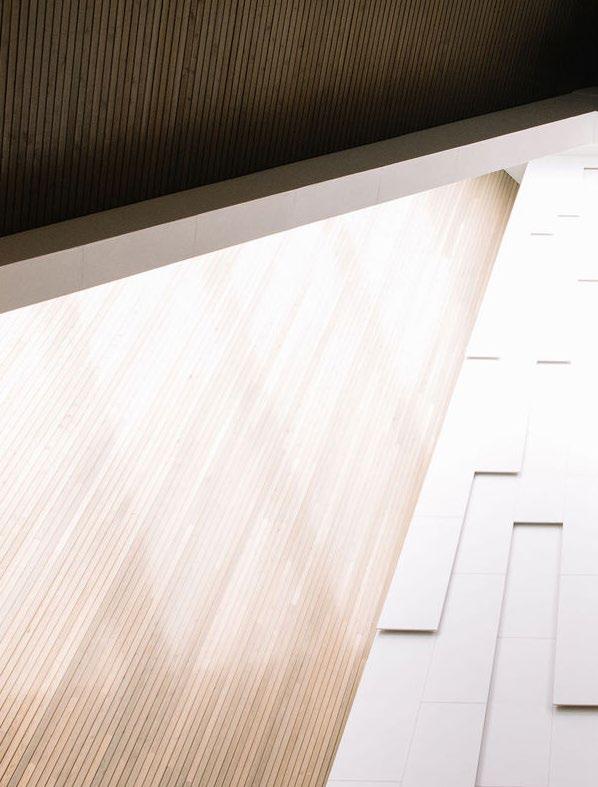
By and large, the church is simple and pure in style. The interplay between the white stonewalls and black stone tiles give the church a special atmosphere.
The pulpit and baptismal font are, like the floor, made of Portuguese stone.
A small golden cross, made by the Danish goldsmith and painter Bent Exner (1932-2006), decorates the altar.
Above the altar hangs a larger axe-cut cross made of untreated oak.
The story goes that a man in his eighties did the cutting.
Vesturkirkjan has two bells. One bears the inscription: “Vakrast er tá smábørn syngja Og tá kirkjuklokkur ringja” (Most lovely is the sound of children singing and the church bells ringing). The other is inscribed: “Málmsløg ljóða Klokkur bjóða Vítt um vallar Harrin Kallar” (The sound of striking on ore, The bells summon, Far-reaching, The Lord calls.)
38 VESTURKIRKJAN

39 CHURCHES OF THE FAROE ISLANDS
HAVNAR KIRKJA (Tórshavn
Cathedral)
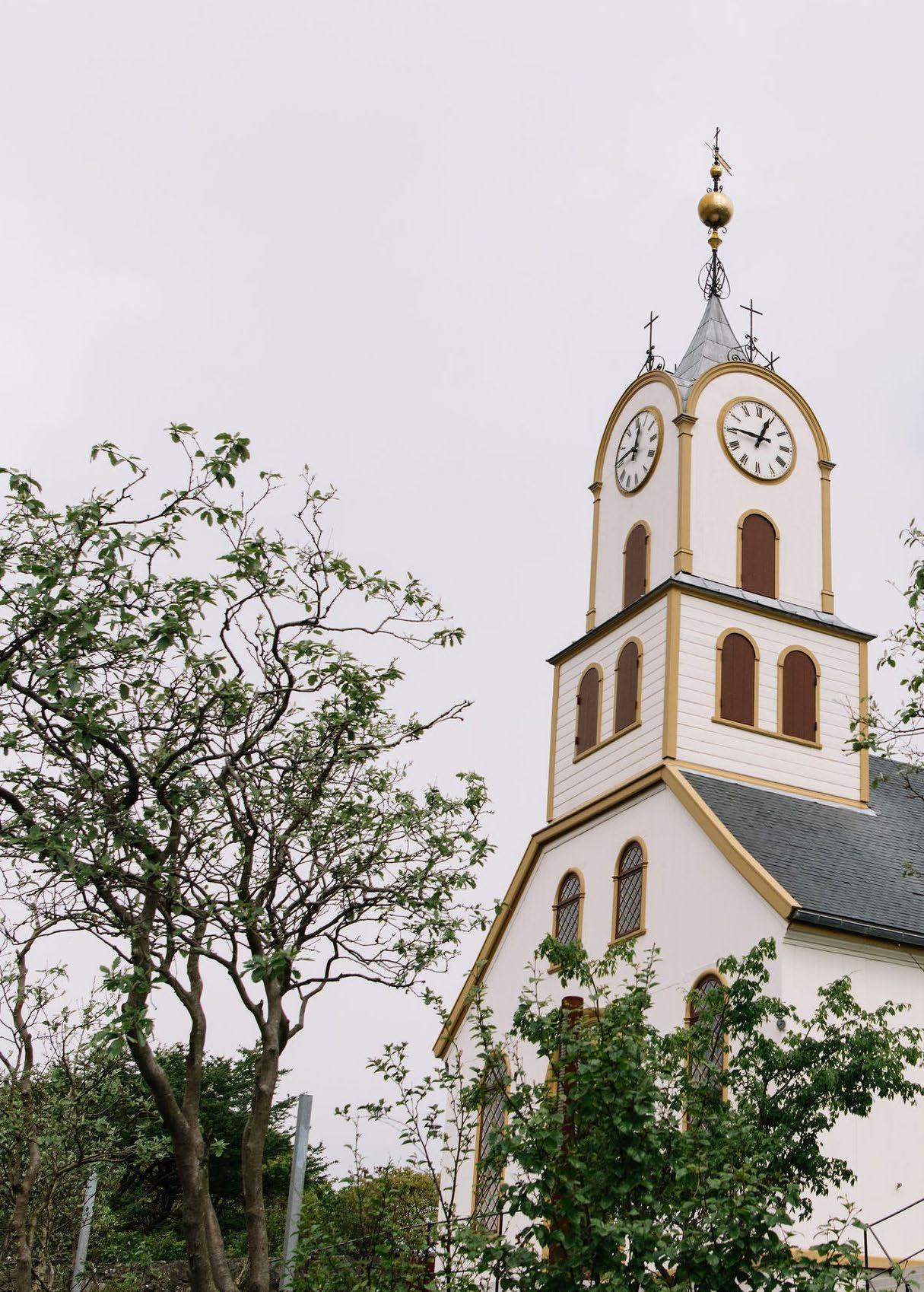
Consecrated: Vígd í 1788.
Umvæld og umbygd í 1865
Address: Kirkjuvegur 3
100 Tórshavn
7 INFO
HAVNAR KIRKJA 40
Every year on Saint Olav’s Day, 29 July, members of parliament, the prime minister and ministers of the government, priests and government officials march in procession to church service in Havnar kirkja. Immediately after this service, the Løgting, the oldest Parliament in Europe, has its first annual meeting.
Havnar kirkja is the second oldest preserved church in the Faroes. It is kept in its original form with all its objects. On the outside, it is painted white, and the tower has a golden spire. On the spire is a weathercock inscribed with the year 1788, referring to the year the church was initially consecrated. In 1865, the church underwent major repairs, and since then, it has had the appearance it has today. When the Diocese of the Faroe Islands was re-established in 1990, Havnar kirkja was appointed Cathedral, and the new office of the dean was founded.
There are many historical objects in the church; for example, a crucifix from 1713, an inscribed brass candlestick from 1678 and a brass chandelier, donated by Jørgen Frantz Hammershaimb, sheriff, in 1757. Guðbrandur Sigurðsson, who oversaw the renovation of the church, also made the baptismal font in 1865. The bowl dates from 1575.

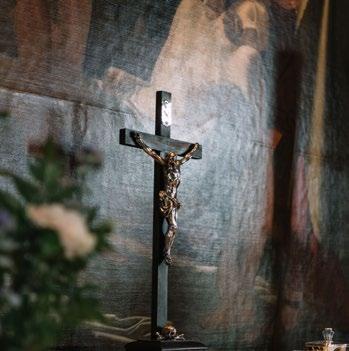
41 CHURCHES OF THE FAROE ISLANDS
HISTORY AND ARCHITECTURE
The oldest known church in Tórshavn was built in the part of town known as á Reyni in 1609. In the early 1780s, work on a new church started. When the church was completed, Tórshavn had around 600 inhabitants. At that time, the church was located outside Tórshavn. Today, the same church is deemed to be very centrally located –that is how small Tórshavn was back then. The church was built in the same style as the old wooden churches, only somewhat bigger. The new church could house the entire parish.
During the renovation of 1865, a vaulted ceiling was added to the church. The vault is pained blue and divided into squares with a bright star in the middle of each square; this is naturally meant to look like the sky. This type of vaulted ceiling is probably inspired by the vaulted ceiling of the Copenhagen Cathedral, Vor Frue Kirke, completed in 1826.
SPECIAL FURNISHINGS
Most of the church decorations are still in their original form. However, there used to be a rare renaissance pulpit from 1609, which was later sold to the church of Hvalvík. The church has three altarpieces and three church bells. Two model ships and one Faroese model boat are suspended from the vaulted ceiling.
For the Saint Olav’s Day procession in 2020, the church was given a special “Saint Olav’s Cloth”, which is now draped around the altar. The cloth is woven to resemble a painting by the artist Edward Fuglø. The title is Ólavsøkuklæði - Halgað úr forðum var Føroya Land (St Olav’s Cloth –Hallowed from the days of old were the Faroe Islands). It was consecrated on 26 July 2020. The cloth is made from wool, silk and synthetic fibre.
42 HAVNAR KIRKJA
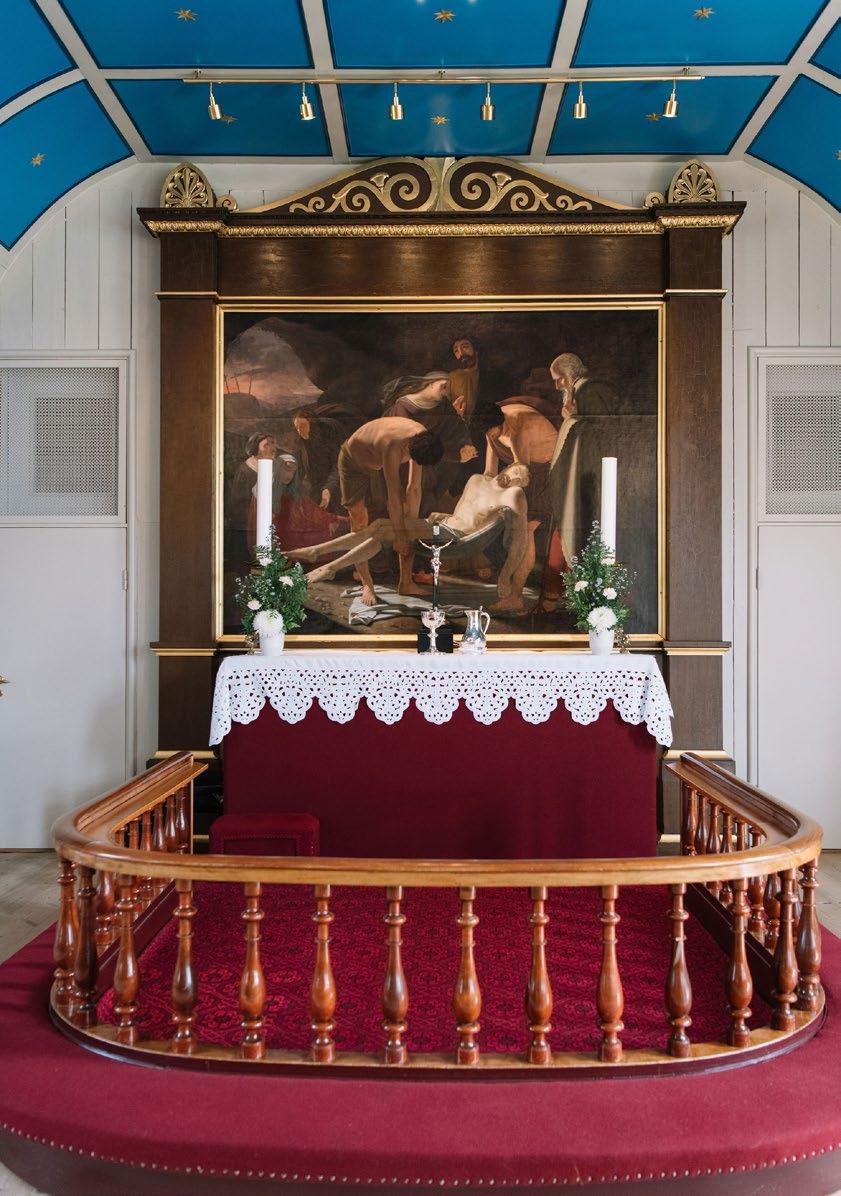
CHURCHES OF THE FAROE ISLANDS 43
THE THREE ALTARPIECES

The main altarpiece in Havnar kirkja pictures the burial of Jesus. It was painted in 1825 by Danish artist Ditlev Conrad Blunck (1798-1854). The other two altarpieces are older and most likely hung in the old church of 1609, located in á Reyni. One of them is from 1647 and now hangs on the northern wall; its theme is the Last Supper, and it is painted in deep, pure colours directly on wood. The carved and painted renaissance frame is from the same period. The other altarpiece is somewhat younger and hangs on the southern wall above the parish clerk’s seat.
THE THREE BELLS
The church bell of Havnar kirkja has rung since 1952. It weighs a whopping 1450 kilograms and is the largest of its kind in the Faroes. It bears the inscription “Eg ringi hvøll um hav og fjøll. Enn er rúm í Harrans høll. Komið øll” (I ring clear over oceans and peaks. There is still room in the hall of the Lord. Come, all). Two older bells hang in the office –they are Bønarklokkan (the prayer bell) and Norska Løva klokkan (the Norwegian Lion bell).

44 HAVNAR KIRKJA
Bønarklokkan, which was given to the church in 1678, received its name because it was used for the call to prayer every morning and evening. It was also common to ring Bønarklokkan when it was time for children to go to school. It was a long-standing tradition to ring Bønarklokkan when poor people, who could not pay for their funeral, were buried. For that reason, it has also been known as the Poverty bell.
Norska-Løva klokkan is said to have been acquired in 1708, and it came with the ship Norska Løva, which drifted ashore in Lambavík on New Year’s Eve in 1707. The Danish ship was caught in a storm west of the Hebrides and was carried by the current to the Faroe Islands. Fourteen people drowned, and around a hundred were rescued.
The ship’s bell hangs in Havnar kirkja, as well as a model of the ship, made by one or several of the rescued crew members as a thank-you for the help.
The model of Norska Løva hangs in the church, along with Peter and Johannes, a brig received in 1841, and a model rowing boat given to the church as a present in 1964.

45 CHURCHES OF THE FAROE ISLANDS
MARIUKIRKJAN (Saint Mary’s Church)

Consecrated: 1987
Address: Mariugøta 4
100 Tórshavn
8 INFO
46 MARIU KIRKJAN
Not far from Tórshavn centre and near the plantation, you will find the catholic church, Mariukirkjan. It was consecrated in 1987. Prior to this, the church was a part of Saint Francis School, closer to town.
In the entrance is a fragmented-glass artwork by the Danish artist, Svend Havsteen-Mikkelsen. Architect Arni Winther designed the church and its interior. Tróndur Patursson made the glasswork. He designed and painted the glass-stained windows and the altarpiece. The altarpiece is an interpretation of Jesus showing his wounds. The glasswork to the right depicts an open, Faroese fishing boat with a crew in rough seas. Jesus is standing next to the boat: “And in the fourth watch of the night Jesus went unto them, walking on the sea” (Matthew 14:25).
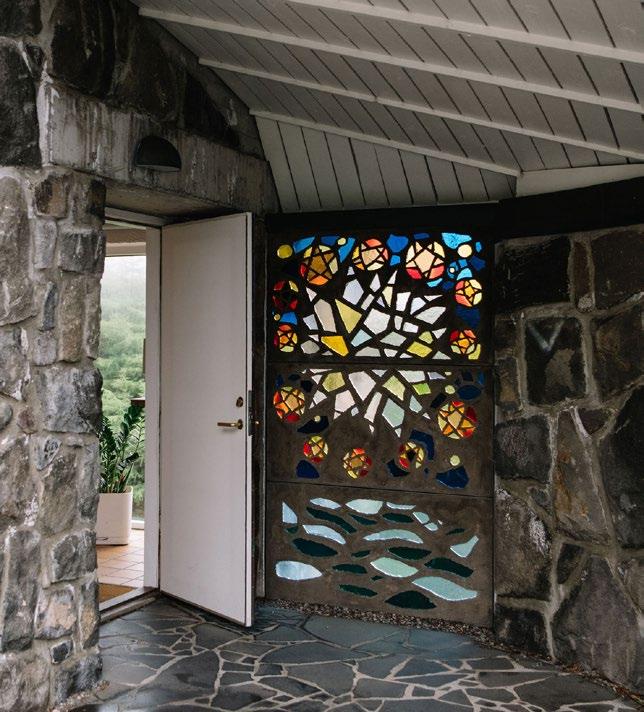
47 CHURCHES OF THE FAROE ISLANDS
There is a wooden carving of the Virgin Mary in the church, made by the Faroese artist Ole Jacob Nielsen. The carving is a replica of a carving on the famous richly-carved fifteenth-century Kirkjubø benches from Ólavskirkjan in Kirkjubø, which now can be seen at the Faroe Islands National Museum.

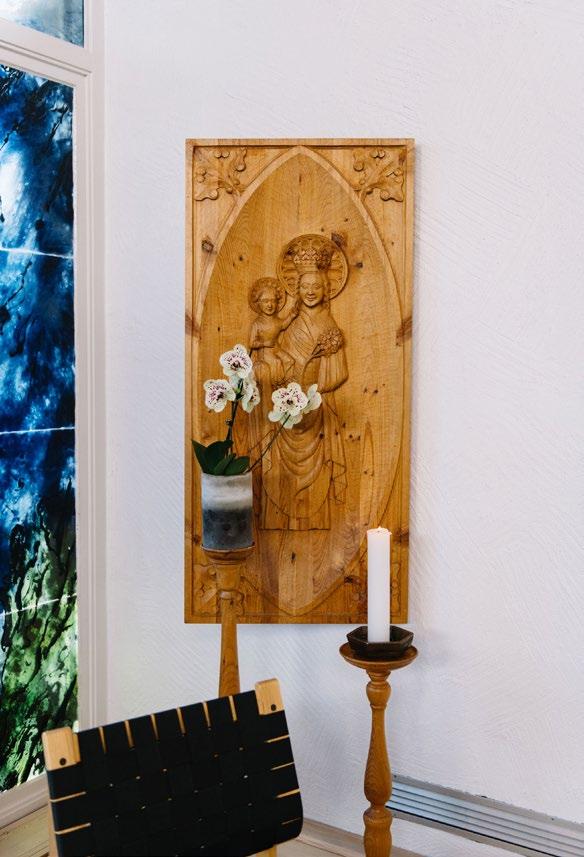
48 MARIU KIRKJAN
In addition to the catholic church in Tórshavn and the church in Gøta, Tróndur’s glasswork can also be seen in Tornberg Church in Odense, Denmark. In Newcastle-upon-Tyne, England, a single glass-stained painting of Tróndur’s decorates an old fourteenth-century Gothic church. Tróndur also decorated Norðoyatunnilin (the Northern Isles sub-sea tunnel) with light art and was in charge of the art in Eysturoyartunnilin (the Eysturoy sub-sea tunnel, opened in 2020). These are only a few of his notable works of art. As you travel around the Faroes, you will surely experience many more of Tróndur’s works.
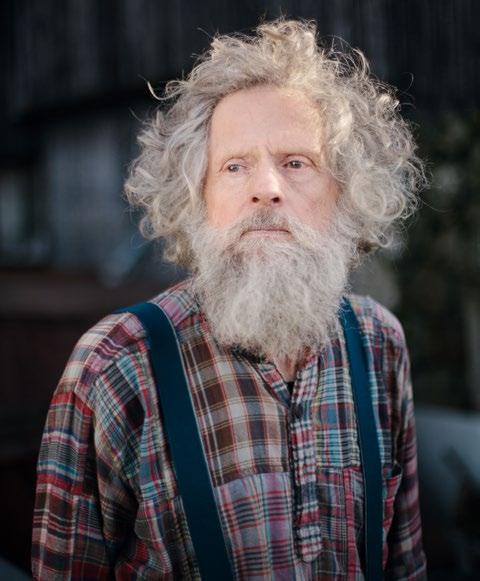

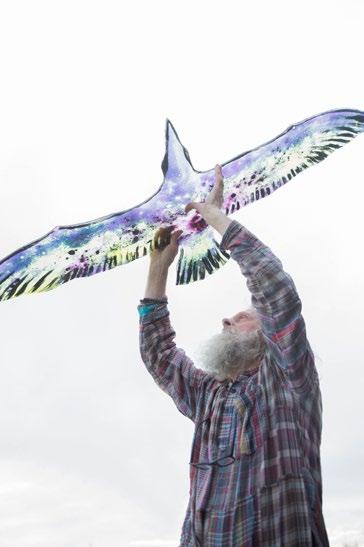
49 CHURCHES OF THE FAROE ISLANDS
ÓLAVSKIRKJAN
(Saint Olav’s Church)

Consecrated: Middle Ages, Renovated and reconsecrated in 1864 and 1967
Address:
Heima á garði 175 Kirkjubøur
9
INFO
50 ÓLAVSKIRKJAN
On the north-facing wall of Saint Olav’s Church, the eldest in the Faroes, a hole is in the wall. The hole was made for people with leprosy that were not permitted to attend service.
They walked the long way over the mountain, Kirkjubøreyn, from the leper hospital in Argir and were only allowed to stand outside and listen to the service through the hole in the wall.
When we walk up the aisle towards the altar, where the last painting of S. J. Mikines hangs as an altarpiece, we are walking on the graves of the Catholic bishops of the Faroes.
These are only a few examples of the rich history of the churches in Kirkjubø.
THE CHURCHES OF KIRKJUBØ
In the Middle Ages, Kirkjubø was the religious and cultural centre of the Faroe Islands, and Ólavskirkjan served as the Cathedral of the Faroese Diocese. Ólavskirkjan is the oldest church in the Faroes and the only medieval church still in use.
In Kirkjubø, they say that the church’s date is made up of four times the number one, meaning that the oldest part of the church was built in 1111. The church was initially named Virgin Mary Church and later Saint Olav’s Church.
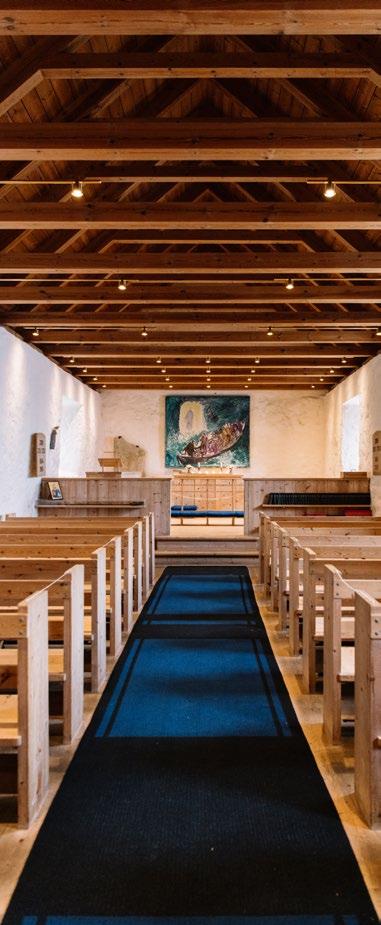
51 CHURCHES OF THE FAROE ISLANDS
The artist Tróndur Patursson lives and has his studio in Kirkjubø. He grew up on the old bishop’s farmhouse, where his father served as the King’s farmer. Tróndur’s twin brother, Páll, took over the farm as the oldest son, and today it is Tróndur’s nephew, Jóannes, who is the King’s farmer. Tróndur often says, jokingly, that had he been born half an hour earlier, he probably wouldn’t be an artist but rather a King’s farmer.

52 ÓLAVSKIRKJAN
The church stands near the ruins of Magnus Cathedral, commonly known as the Krikjubø Wall: a gothic cathedral, ordered by Erlendur Bishop around AD 1300 through levying a heavy tax on Faroese farmers, which likely led to a civil war. The ruins of yet another medieval church are located east of the Kirkjubø Wall (today called Líkhús, or Mortuary in English). Once upon a time, these three churches stood side by side in Kirkjubø.
Next to the three medieval churches was the bishop’s residence – the old farmhouse. Parts of the farmhouse were lost in avalanches and hurricanes throughout the times – the last avalanche struck in 1772. However, parts of the farmhouse endured, and since then, it has been known as the King’s Farm, where the Patursson family have resided for 17 generations. The house includes, among other things, Roykstovan (the smoke room), which is approximately 1000 years old, and a common room used for a Latin school where the Norwegian King, Sverri, supposedly studied for his priesthood.
ÓLAVSKIRKJAN (SAINT OLAV’S CHURCH)
In 1862, Ólavskirkjan was in such a poor state that there was talk of reparing the Kirkjubø Wall to make it fit for a church. These plans were, however, abandoned in 1874, and renovation of the old Ólavskirkja got underway. The restoration work affected the appearance of the church, and many people disapproved of the new look. When repairs were required again, in the 1960s, they aimed at restoring the church to its original form.
During this time, major archaeological research was carried out, where, among other things, three medieval floorcoverings and an English coin from the 1223-1235 period were uncovered. Under the floor of the choir was a bishop’s grave and a bishop’s staff.
The church furniture is made from dressed, unpainted pinewood. The stonewalls are whitewashed and make room for the magnificent altarpiece by S. J. Joensen Mikines (1906-1979), handed to the church at its re-consecration ceremony in 1967.
53 CHURCHES OF THE FAROE ISLANDS
The altarpiece by S. J. Mikines shows Jesus and a Faroese rowing boat. They say that this was the last painting that Mikines ever made. Mikines, who struggled with illness, only just finished the painting when the ceremony was to take place. As a result, it was not completely dry when it was hung.

There was no financial support for the renovation of the church in the 1960s. But, in 1966, the people of Kirkjubø organised events, including a successful bazaar, which raised enough money to pay for the renovation.
FURNISHINGS AND OBJECTS
Much of the furniture from the Catholic period has been removed from the church and can now be seen at the Faroe Islands National Museum (Tjóðsavnið). Among the objects that can be experienced at the museum are a picture of the Virgin Mary from the thirteenth century, the bishop’s staff and the renowned elaborately carved Kirkjubø benches.

In addition to the current altarpiece by Mikines, another altarpiece by the Danish painter, N. V. Dorph, given to the church after the renovation of 1874, hangs on the northern wall. There are two gravestones from the Middle Ages in the church, whereof one was for Jóhannes, bishop in the fifteenth century.
The iron and stained-glass gates in the stonewall around the church were made by Tróndur Patursson in 1999. Tróndur has also drawn a symbol on the blue kneeler in the church.
54 ÓLAVSKIRKJAN
Palli Gregoriussen (1932-2021), one of the most prominent Faroese architects, has drawn up and documented every church in the Faroes. In the 1990s, Palli worked with Tróndur Patursson on a proposal and a model of Magnus Cathedral, which would restore it to a working church. The windows and other ornaments were to be stained-glass by Tróndur Patursson. The proposal has yet to be approved by the authorities. Nonetheless, the model and drawings can be seen at the old bishop’s farmhouse.

55 CHURCHES OF THE FAROE ISLANDS
FÁMJINS KIRKJA (The Church of

INFO Consecrated: 13. February 1876 Address: Fámjinsvegur 1 870 Fámjin 56
Fámjin) 10 FÁMJINS KIRKJA
On the west side of Suðuroy lies Fámjin surrounded by tall mountains and protected from the Atlantic Ocean by a characteristic skerry. Further up from the village lies the lake Kirkjuvatn from which the waterfall Kirkjufossur flows, running down to the river west of the church.

Whether you are coming down from the mountains or up from the foreshore, you can see the beautiful church in the village. The church is distinguished by its bright and dignified appearance and light grey slate roof. The church stands firmly on rocky soil, resilient against strong surges and embracing the warm glow of sunsets.

57 CHURCHES OF THE FAROE ISLANDS
HISTORY AND ARCHITECTURE
Two churches were erected in Fámjin before the current one was built. Little is known about the first church in the village. The second church was built in 1826 and followed the traditional Faroese church building customs with a turf roof and a low tower.
The current church was built in 1875. The building contractor was the Icelander G. Sivertsen Sigurdson, who was assisted by workmen from the entire island.

The church is built from stone and the walls are double-stacked. The upper part of the eastern section of the church is constructed with
bricks. The slate roof is made from shale, as are the gables above the sill. The tower stands tall, stretching from the sill and features a tall spire on top. The window frames are crafted from iron, and the top pane forms a pointed arch containing a cross.
The entrance to the church is located at the western end, featuring carved double doors with a small window above. Inside, the church is painted white and the clinker-built arch is blue. The church contains eighteen pews, nine on each side for the congregation.
Two major renovations of the church were completed in 1952 and 1989 respectively.
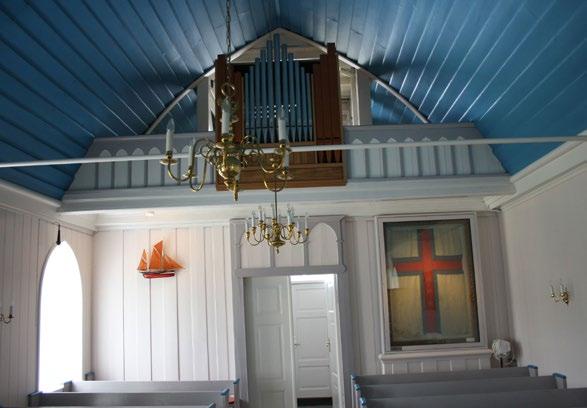
58 FÁMJINS KIRKJA
The first Faroese flag hangs in the church. It was made by Jens Olivur Lisberg from Fámjin, along with others. Fámjin is also where the flag was hoisted for the very first time at a family wedding.
FURNITURE AND OBJECTS
The altarpiece, which depicts the baptism of Christ, was painted by the famous Danish artist Carl Bloch. The alterpiece cost 600 kr in 1876. To raise enough funds for the altarpiece, the fishermen made a collective decision that each day a boat set out for fishing, the proceeds from the sale of the largest catch would be donated towards the construction of the altarpiece.
The church bell dates back to 1935. The inscription reads: “The church of Fámjin 1935. He that hath ears to hear, let him hear. (Luke 14.35)
The baptismal font is from 1876. It is octagonal and carved out of wood. The basin and pitcher are made from silver.
Three chandeliers hang in the church. Elin Lisberg from Fámjin donated one of the chandeliers to the church at the beginning of the 20th century. The men from Fámjin who sailed with the smack “Marshall” donated another chandelier in 1937. The 12-armed, handcrafted chandelier is from approximately 1930 and came from the church of Hovi to Fámjin in the eighties.
ADDITIONAL INFORMATION
A silver chalice with a plate and a golden cross are gifts from the British government in acknowledgement of the respectful funeral that was held for the crew of the trawler” Girdleness”, which was wrecked and lost close to the village in December 1931.
The church porch contains a rune stone that was found in the cemetery around 1846. Archaeologist Sverri Dahl writes the following about the rune stone: “The inscription, which reads D P S F, is taken to be the initials of a man in Fámjin, and it is believed that the stone served as a tombstone to remember him by. D(.....) P(....) S(on) F(ámjin).”
In August 1955, the first Faroese flag, Merkið, was framed and hung up for display in the church of Fámjin for safekeeping. The frame reads: These letters frame the first Faroese flag. Jens Oliver Lisberg hoisted it for the first time in the village in the summer of 1919.

VÁGS KIRKJA (The Church of Vágur)

Consecrated: 19 February 1939
Address: Vágsvegur 34 900 Vágur
11 60 INFO
VÁGS KIRKJA
The church in Vágur was consecrated on 19 February 1939, though the cornerstone was already lain in 1927 by Dean Jákup Dahl. The church is a votive church, i.e., people in distress or danger can promise alms to the church in Vágur.
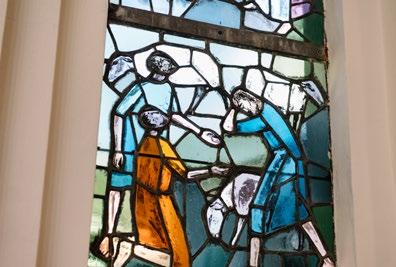
HISTORY AND ARCHITECTURE
The church council in Vágur started discussing building a new and bigger church in 1913 as the population was growing rapidly. In 1926, a proposal by the architect Sofus Johan Hofgaard was accepted, and the architect was asked to make the final drawings for the new church in Vágur. The church was completed thirteen years later.
Vágs kirkja stands out by its New Gothic style. The choir is heptagonal with two small annexes to the north and the south. Four stain-glassed windows, arching up into a narrow point, are in the choir. They were made by Ernst Trier in Vallekilde in 1959 and depict the story of Jesus from the annunciation to the resurrection. The four bronze chandeliers in the church are made in simple baroque style. They were gifted by the congregation on the occasion of the church’s consecration in 1939.

61 CHURCHES OF THE FAROE ISLANDS
Vágs kirkja is one of the few churches with its own church choir. Several people joined forces to form the church choir Ljómur in 1939. Edith Dahl was its first director, and the choir’s first official performance was at the consecration of the church on 19 February 1939.

The hymn “Nú hvítna tindar…” (“Now peaks are dusted white”) has a special connection to the choir Ljómur. Edith Dahl asked Robert Joensen from Klaksvík to translate the Danish hymn “Nu falmer skoven…” by the prominent and influential churchman N. F. S. Grundtvig.
At a concert on All Saints’ Day in 1942, Ljómur sang “Nú hvítna tindar”, a masterful Faroese paraphrase on the Danish hymn. Since then, this hymn has always been part of the repertoire at the concert in Vágs kirkja on All Saints’ Day.
FURNISHINGS AND OBJECTS
The altarpiece depicting Jesus addressing the congregation first adorned an older church at Kirkjuklettur in Vágur. It is painted by the artist Th.
62 VÁGS KIRKJA
Wegener sometime between 1840 and 1850. The old altarpiece from 1729, also from the churches at Kirkjuklettur, is also found in the church. The beautiful hexagonal baptismal font is made out of Faroese rock and decorated with gold. It is made by Jóhan Petersen, commonly known as Jóhan from Mikladalur. The baptismal bowl is very old, probably from around 1500.
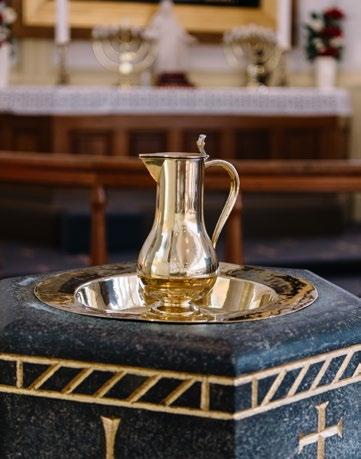
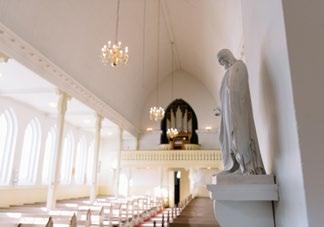
Ten plaster sculptures of the apostles stand along the wall. The last two, Peter and John, stand above the threshold to the choir.
The church received a beautiful model of the smack Albert Victor from Helena Friis, who lived in Denmark, in the 1950s. It hangs from the ceiling in the nave. In the summer of 1975, the church received a model of the smack City from Sunnuva Egholm of Vestmanna. It is found in the choir of the church.

A sculpture of Dean Jákup Dahl was unveiled on 5 June 1978. The sculptor was Janus Kamban. It stands by the entrance to the church as a memorial to the great man.

63 CHURCHES OF THE FAROE ISLANDS
LOCATIONS OF THE 62 CHURCHES IN THE FAROE
ISLANDS
